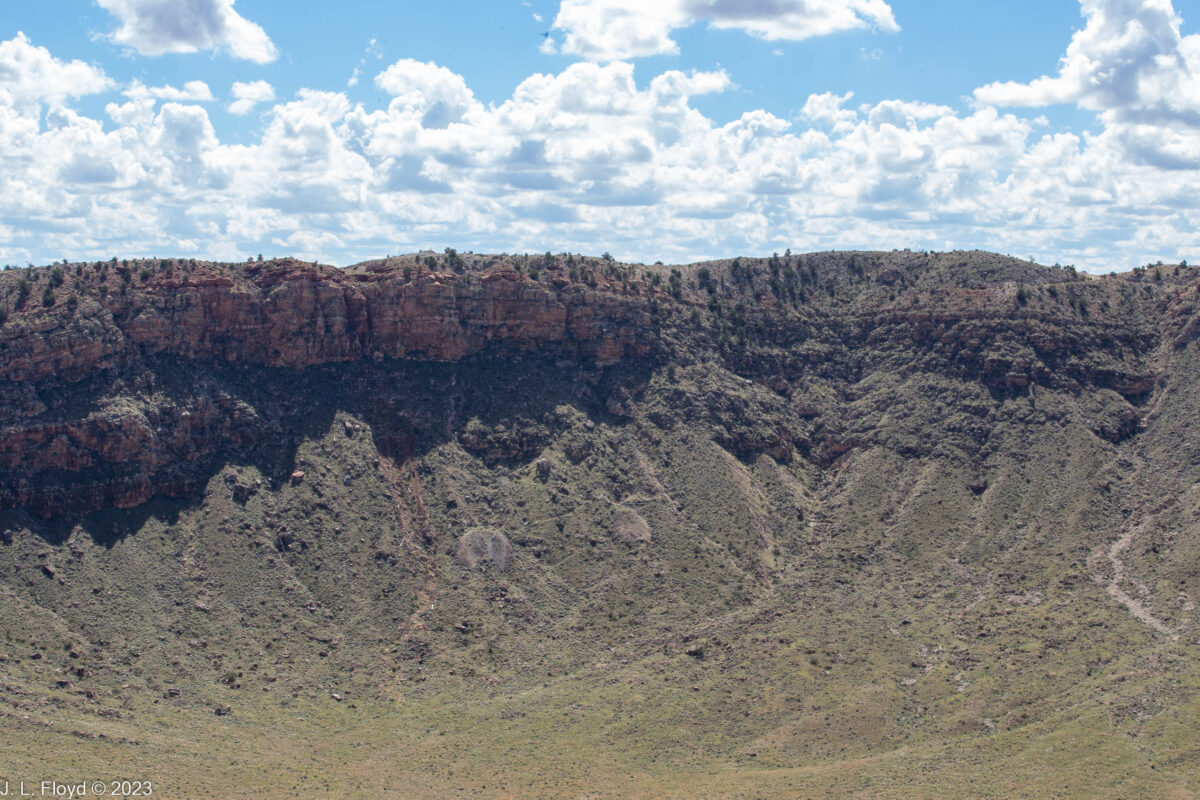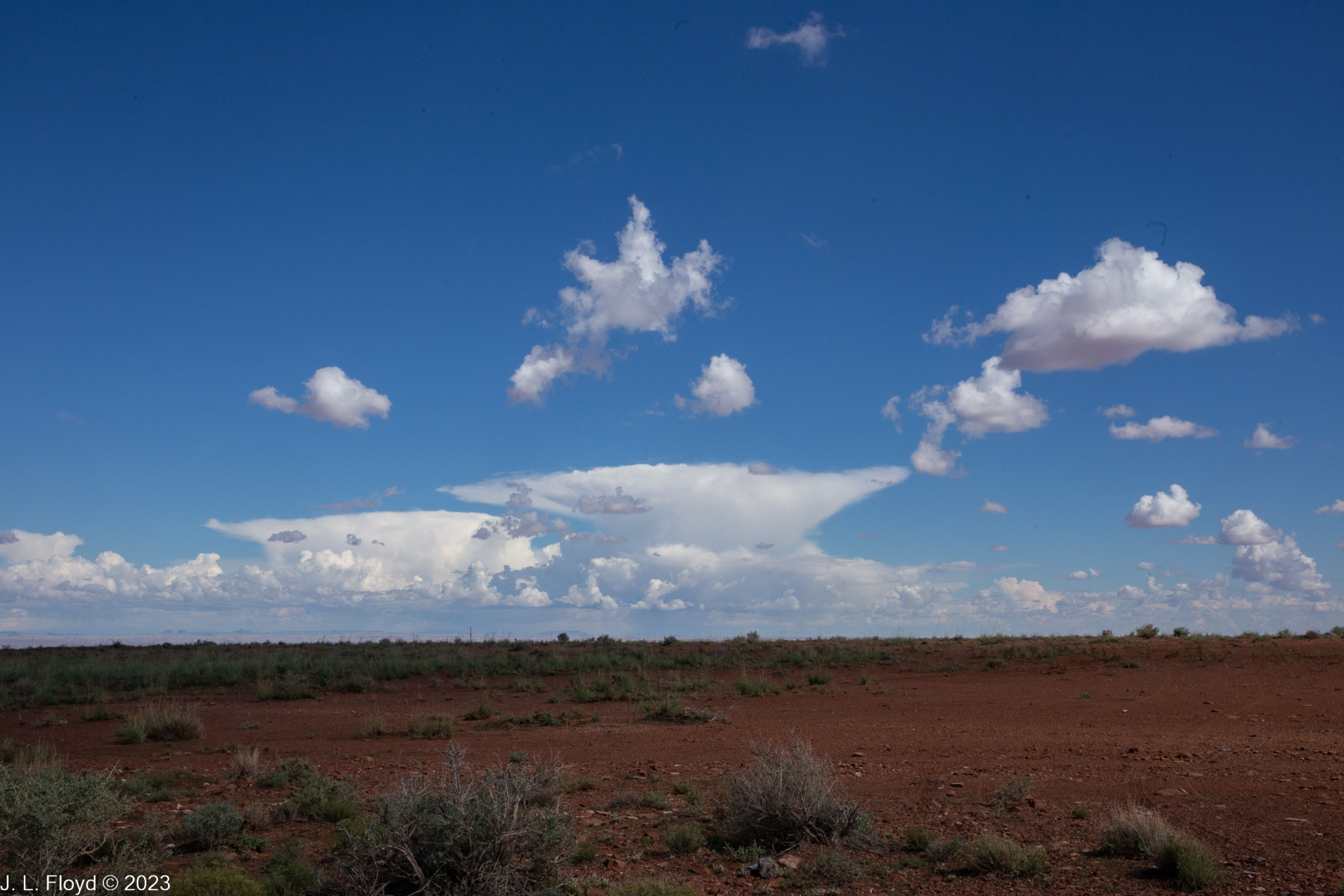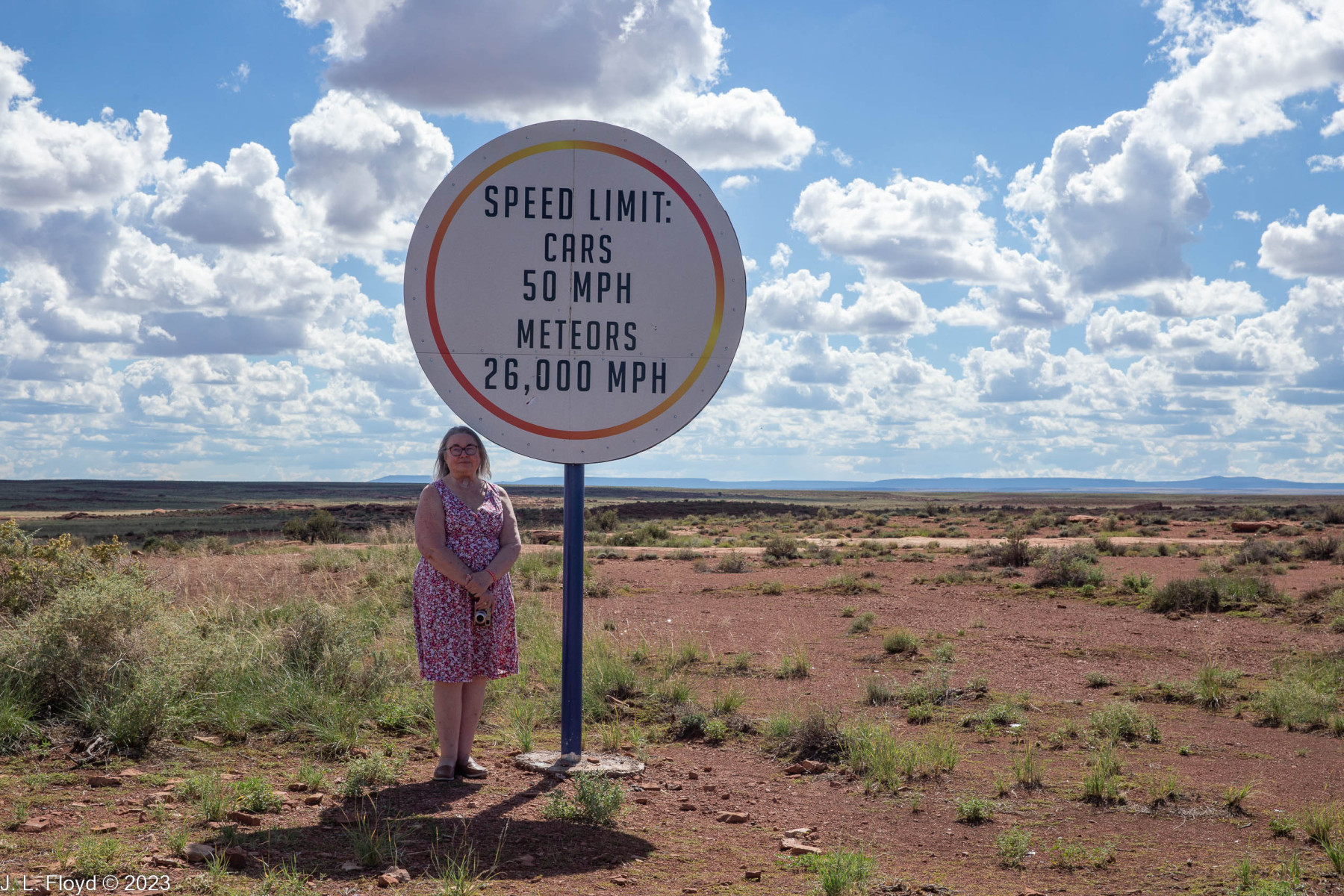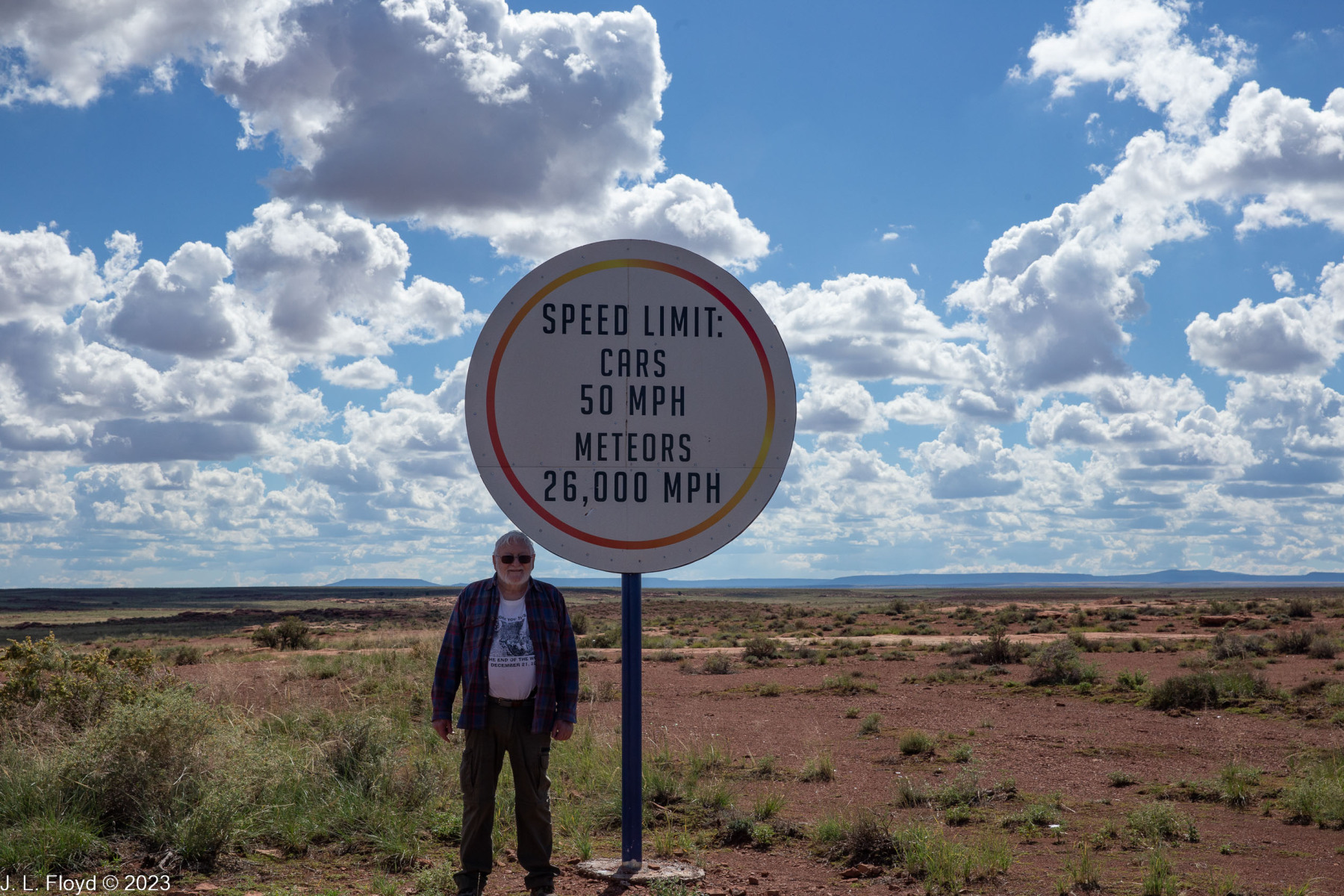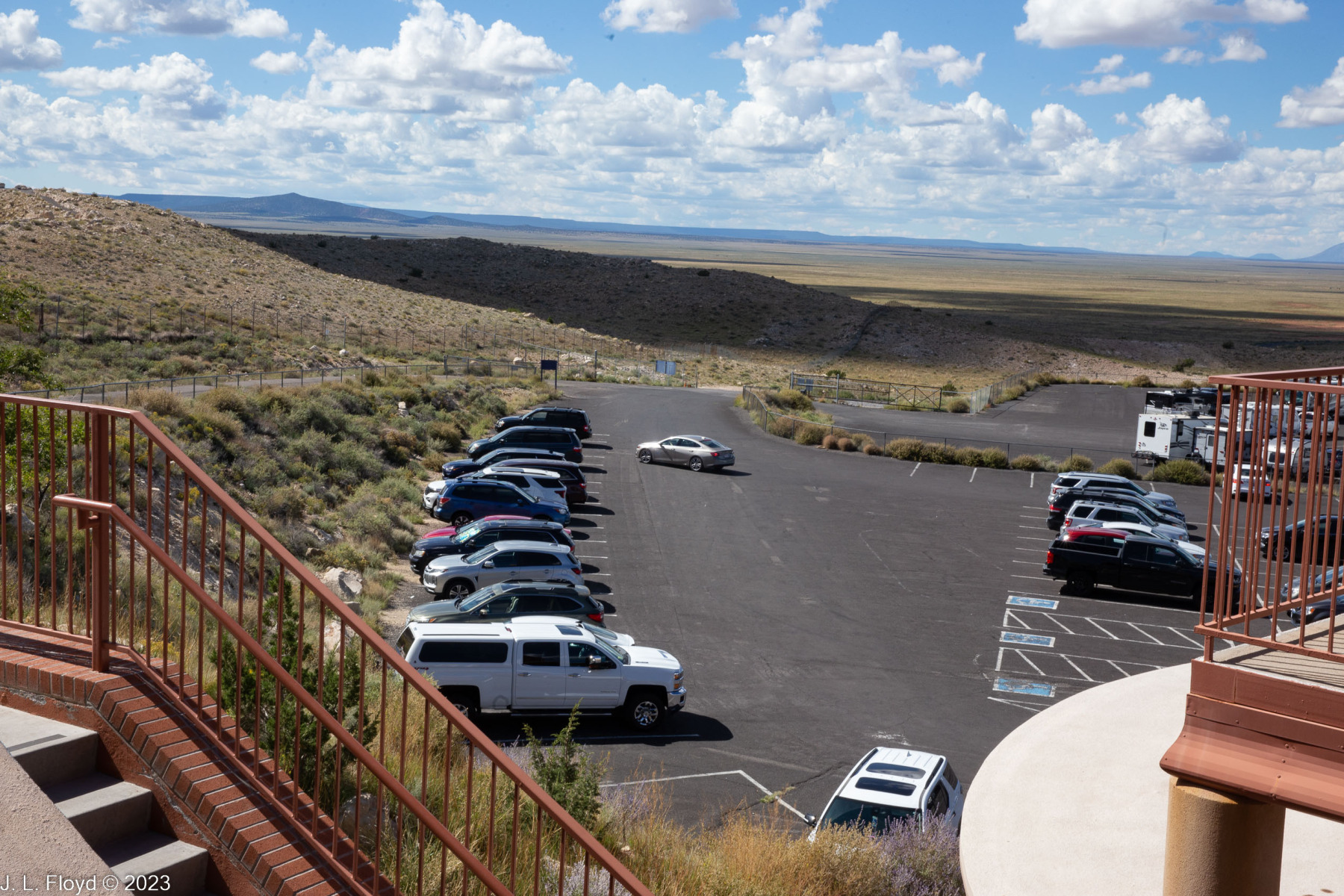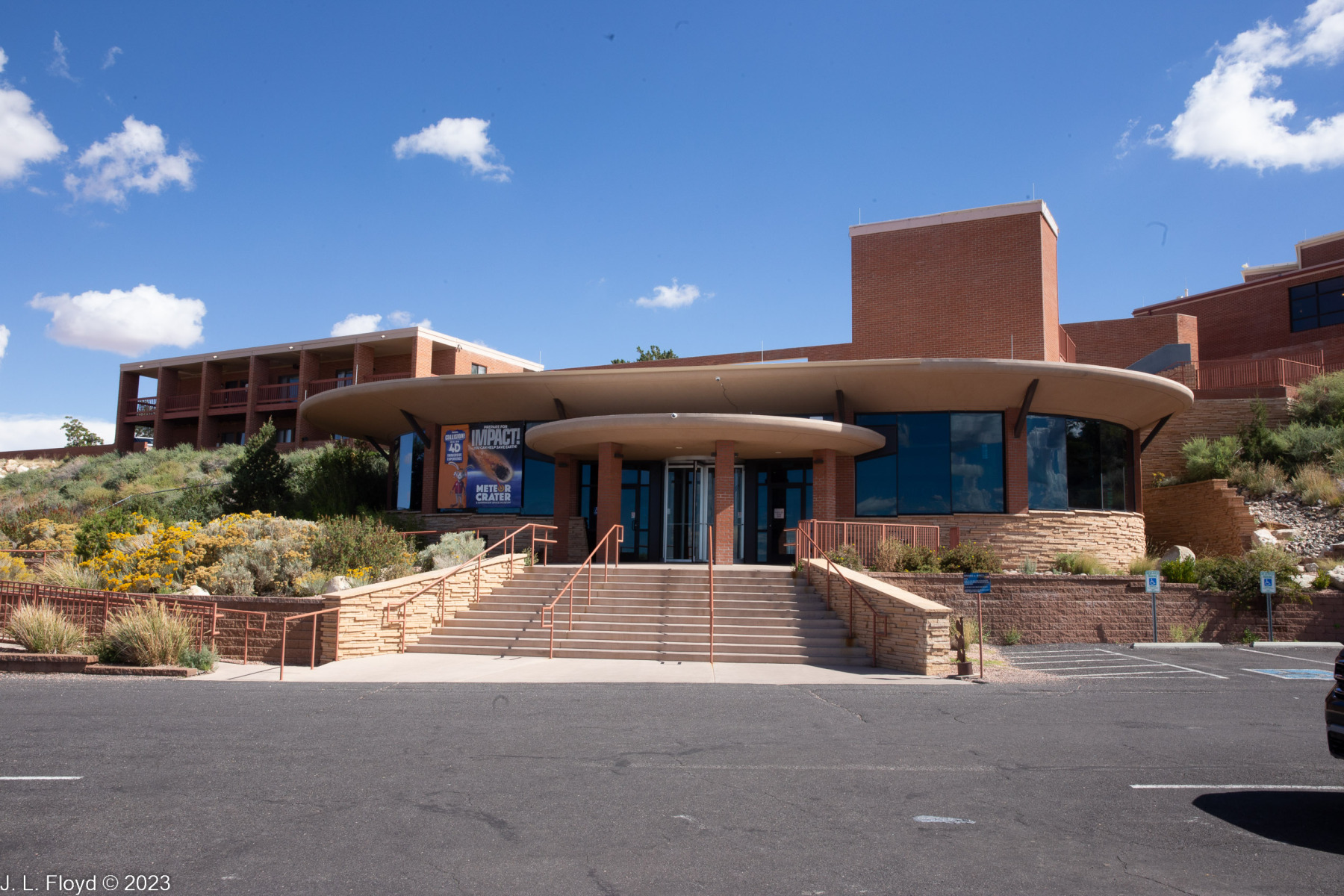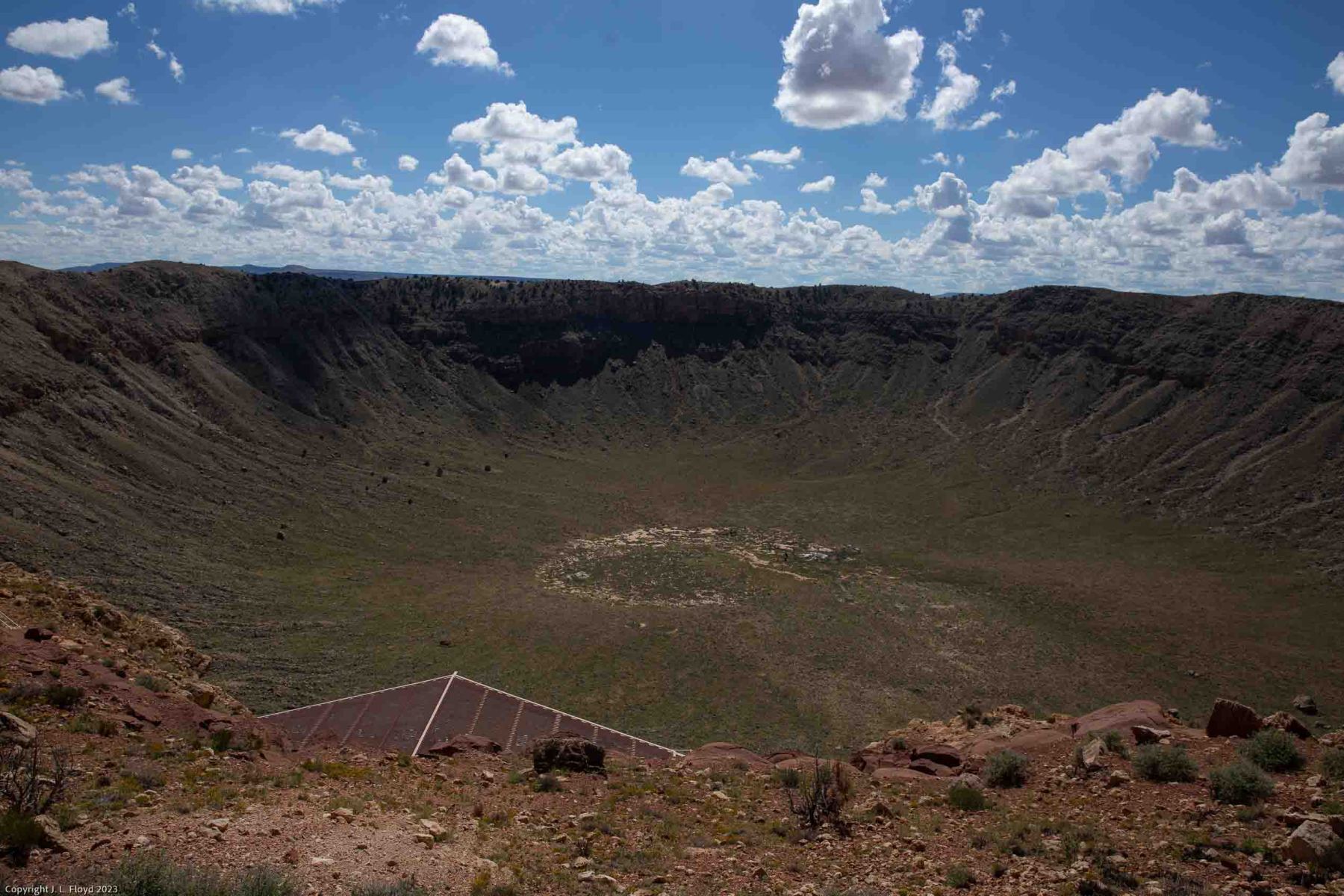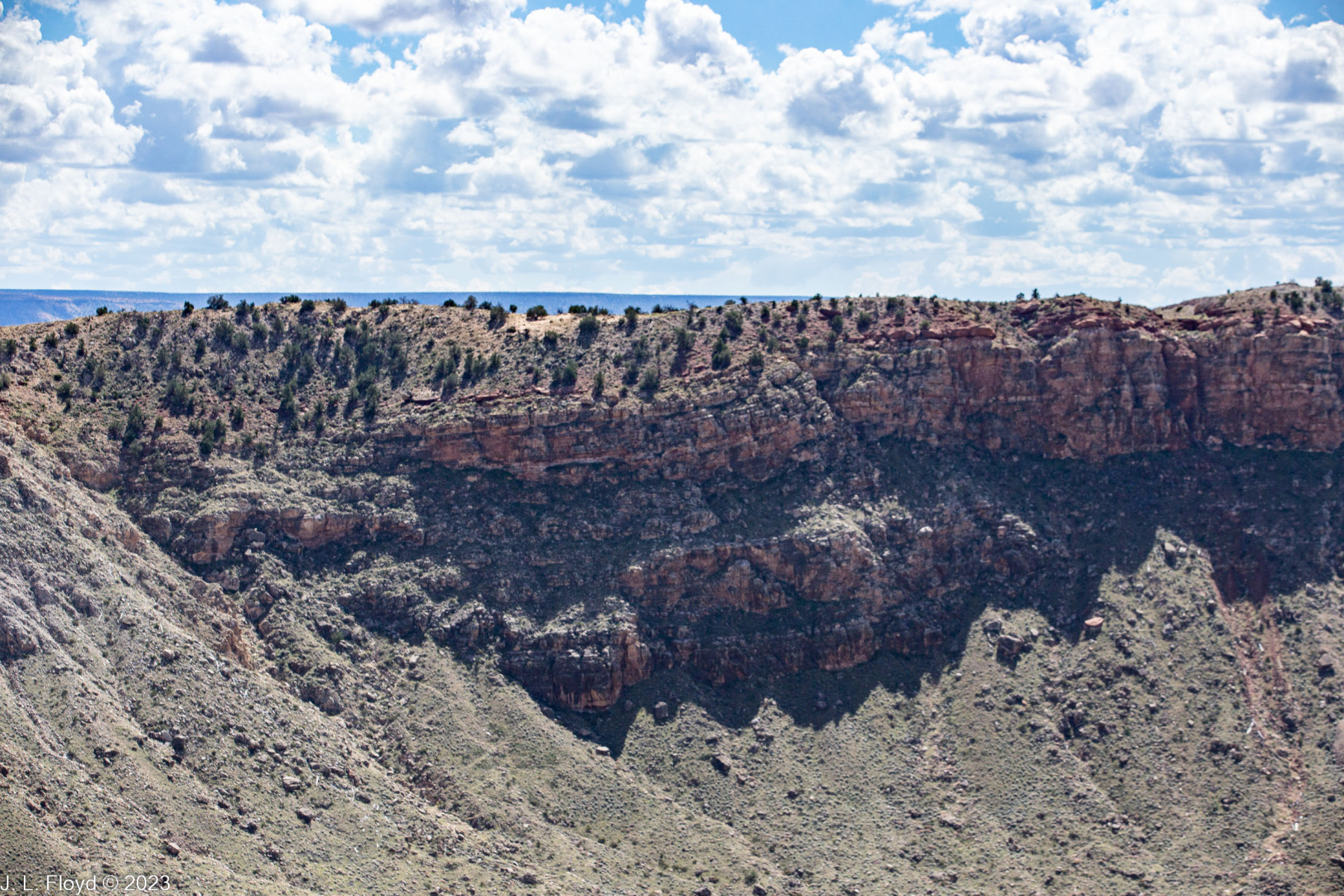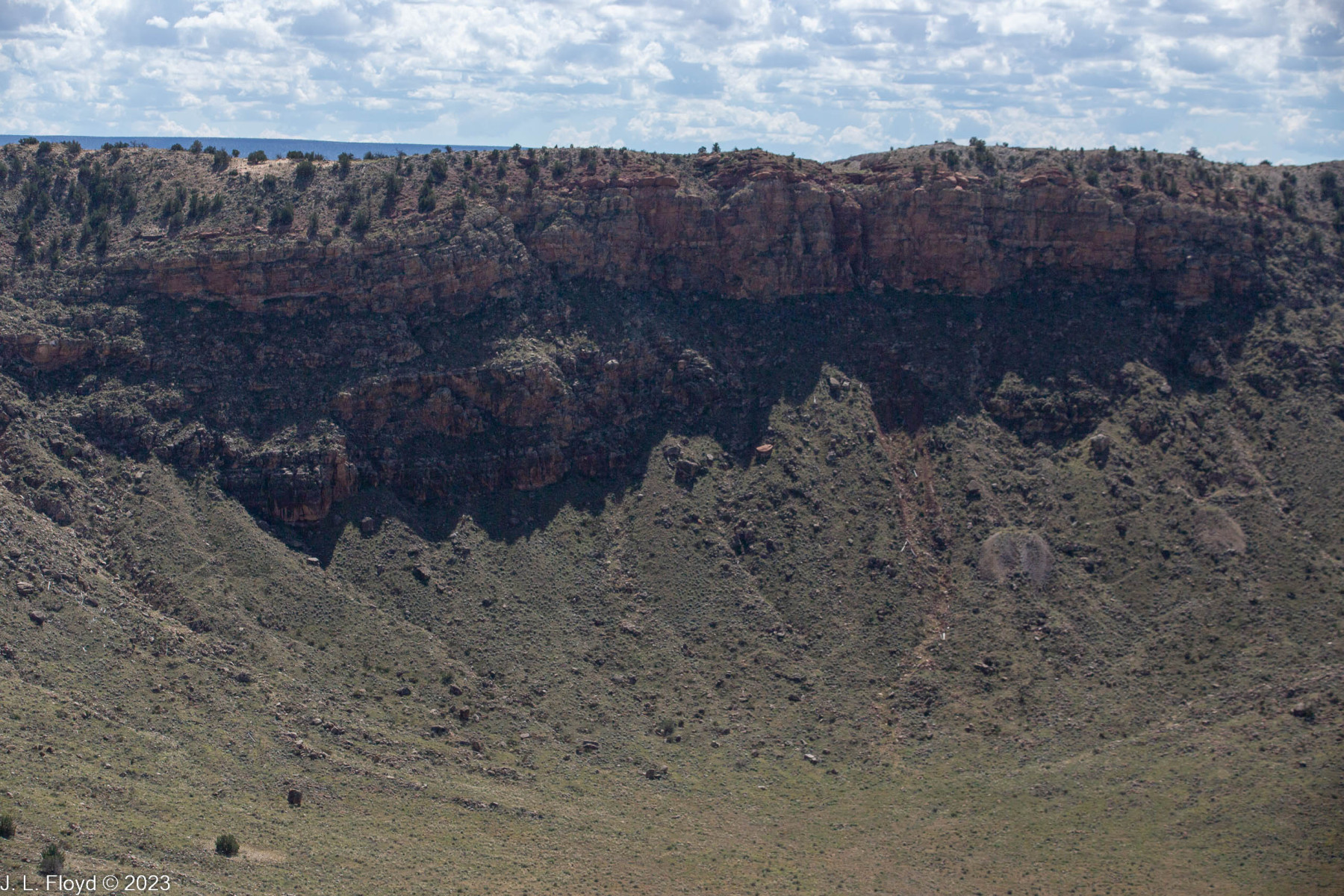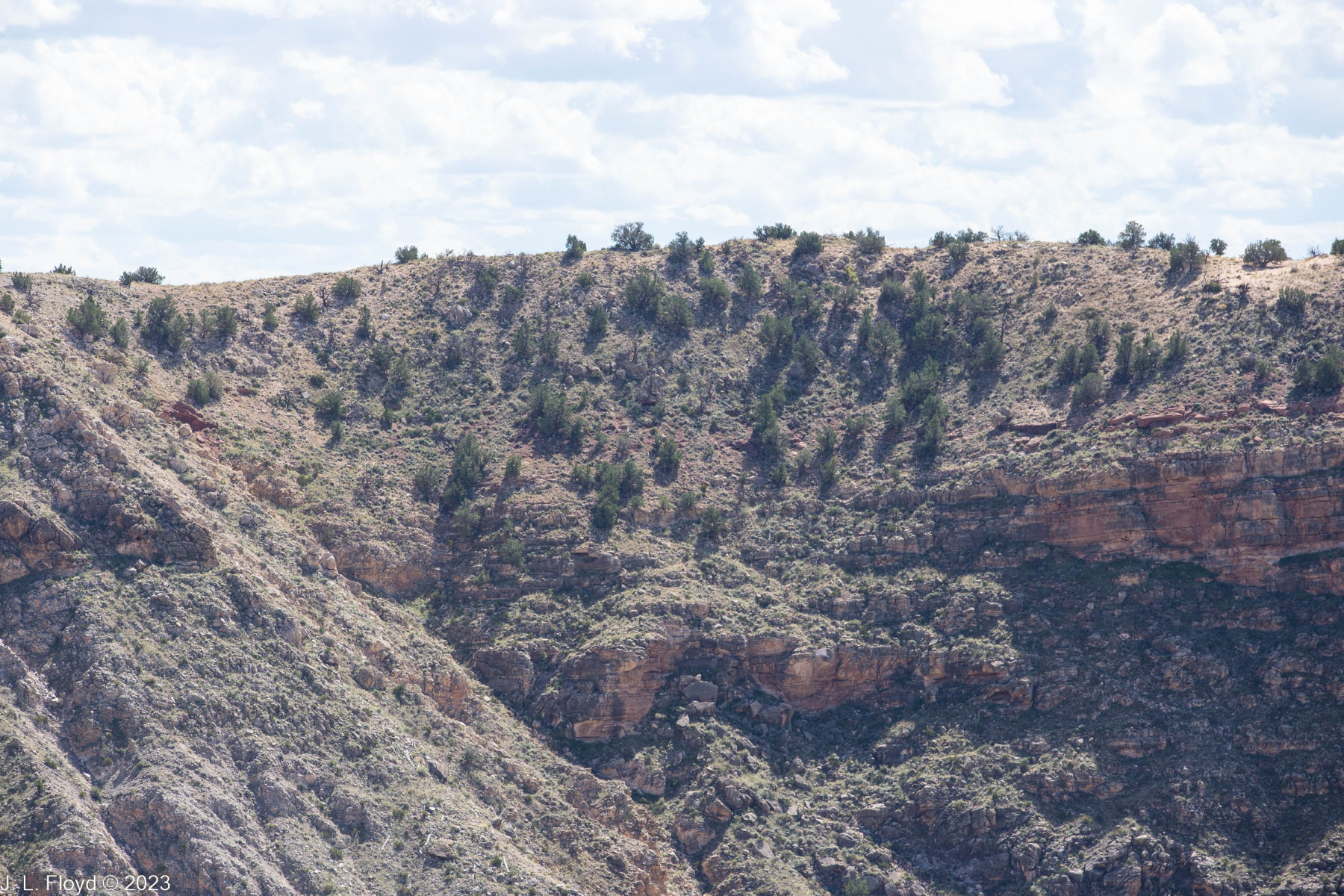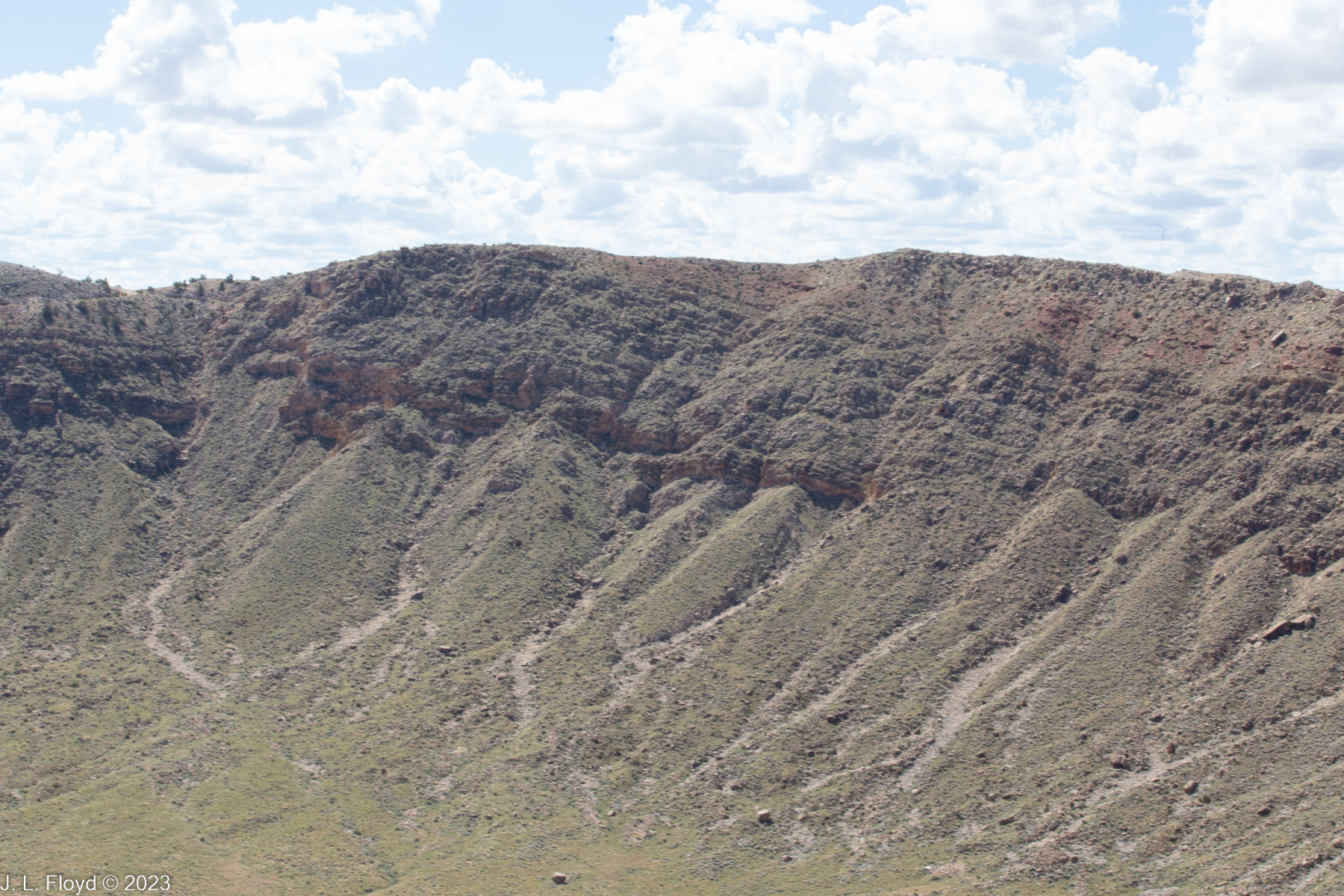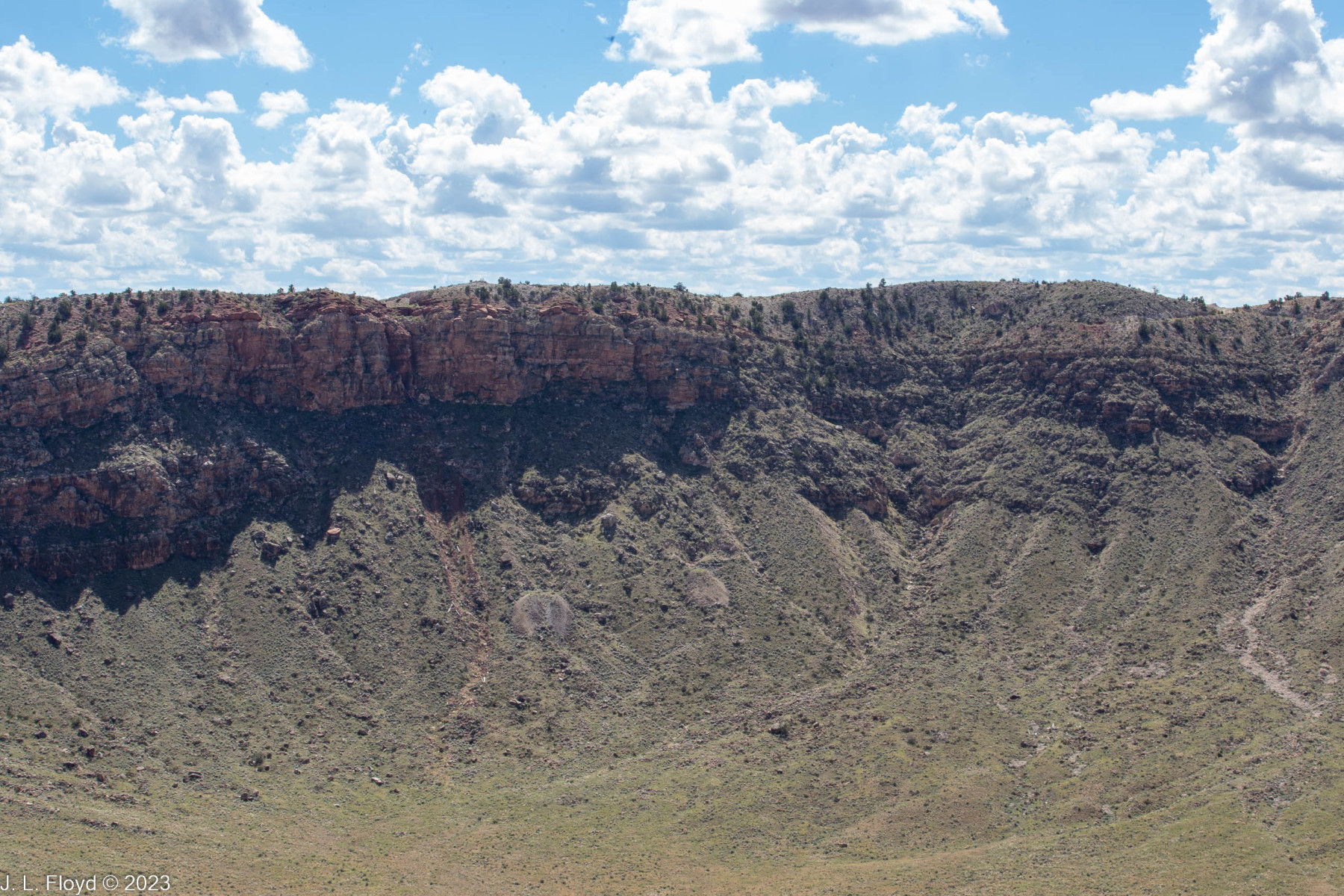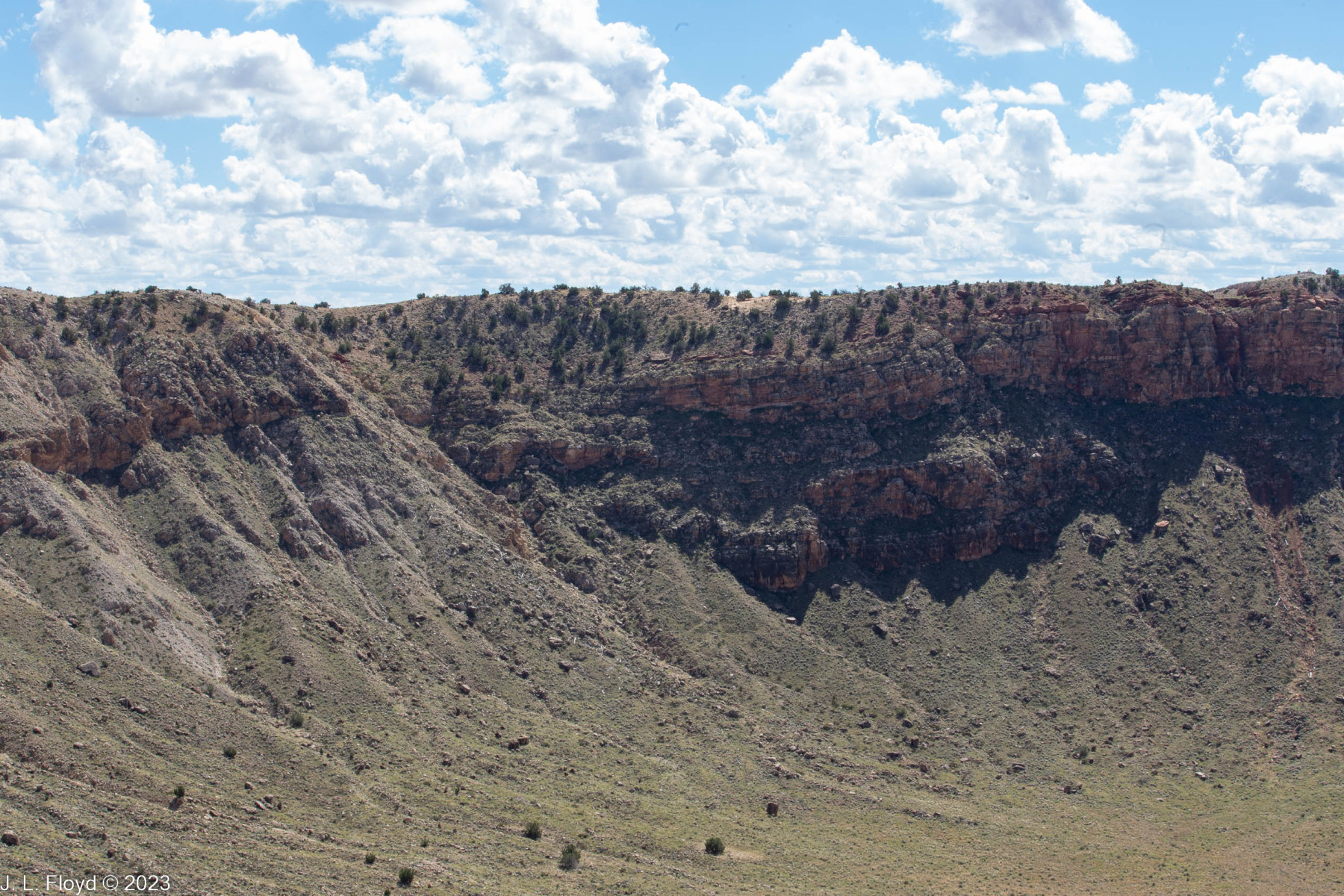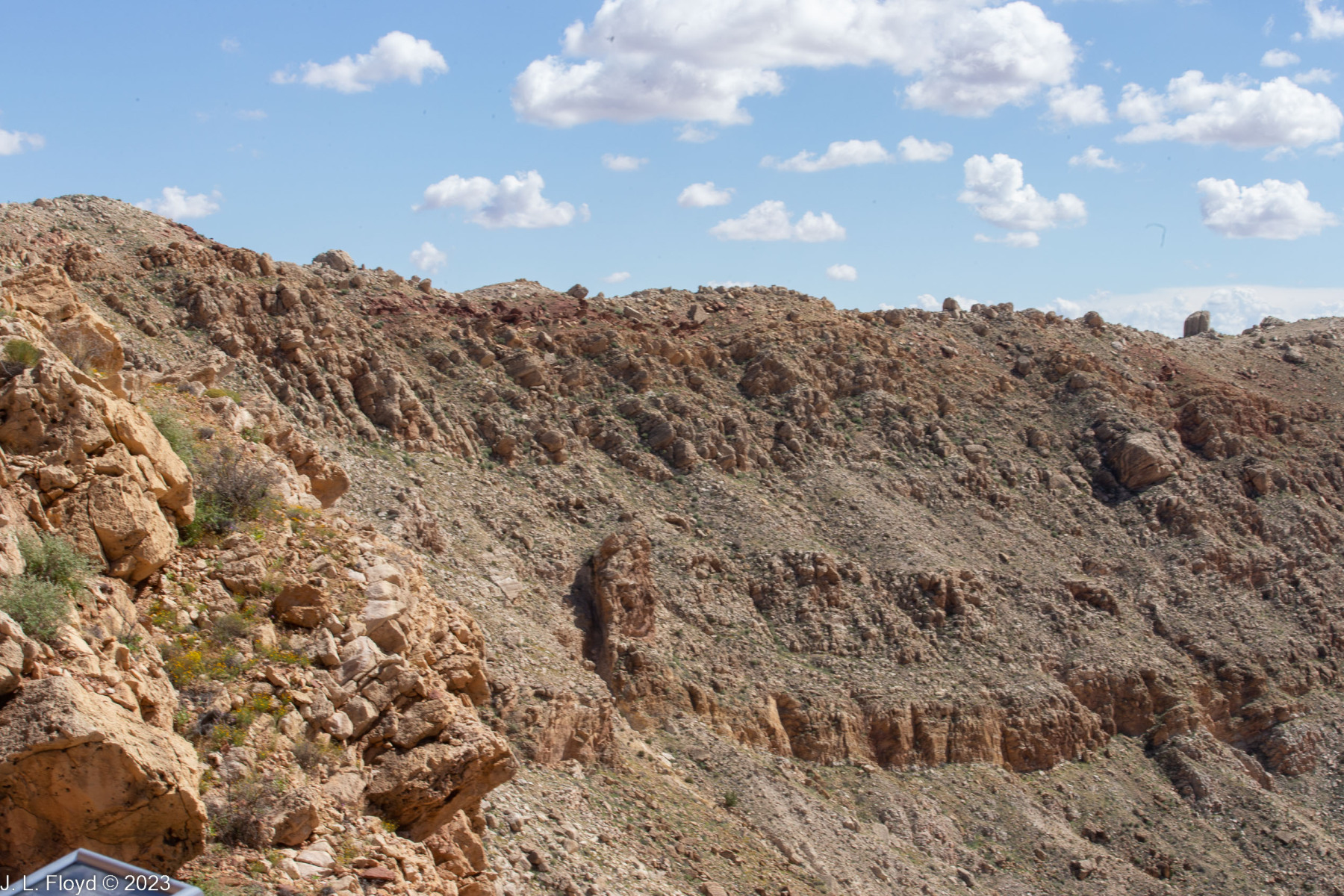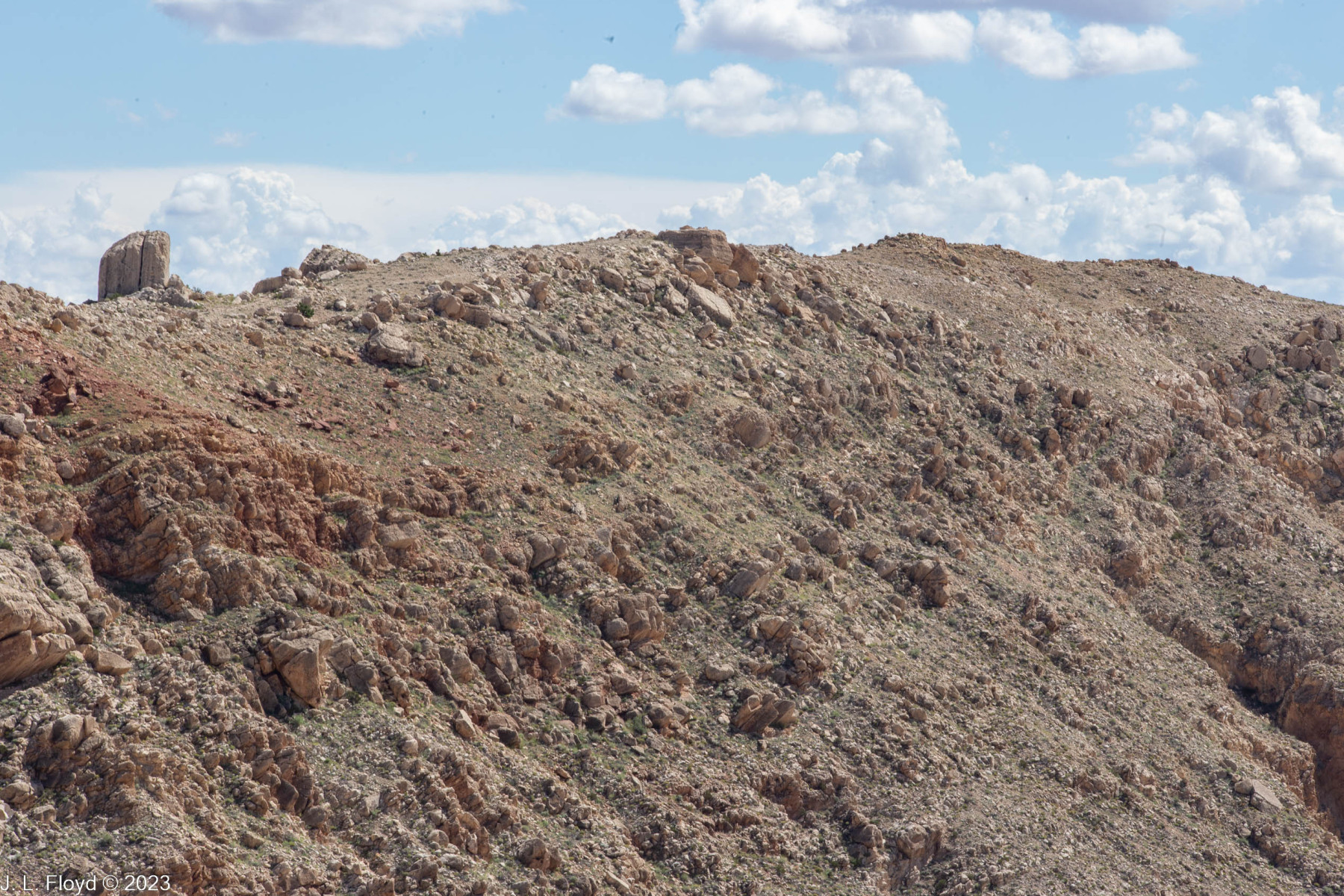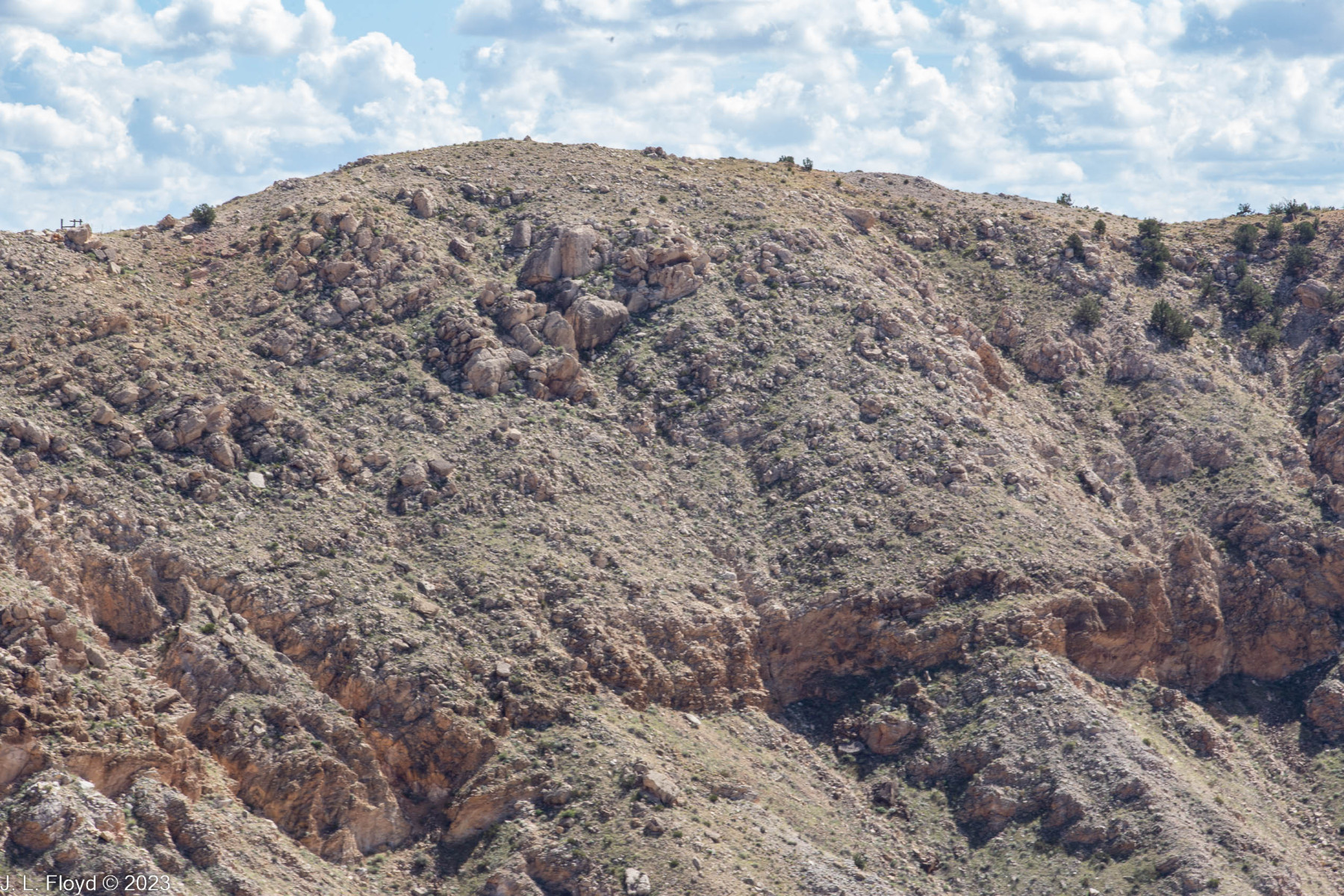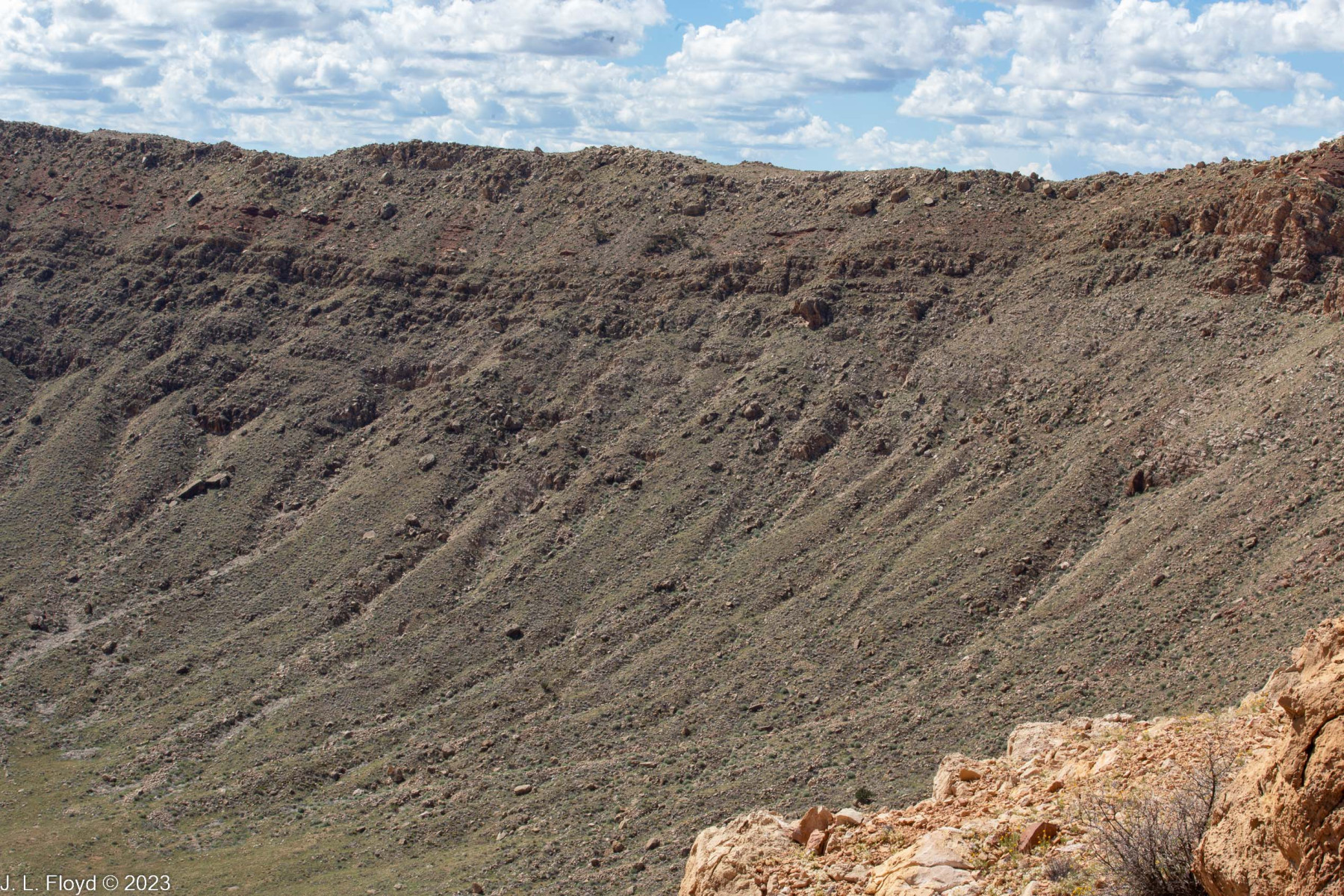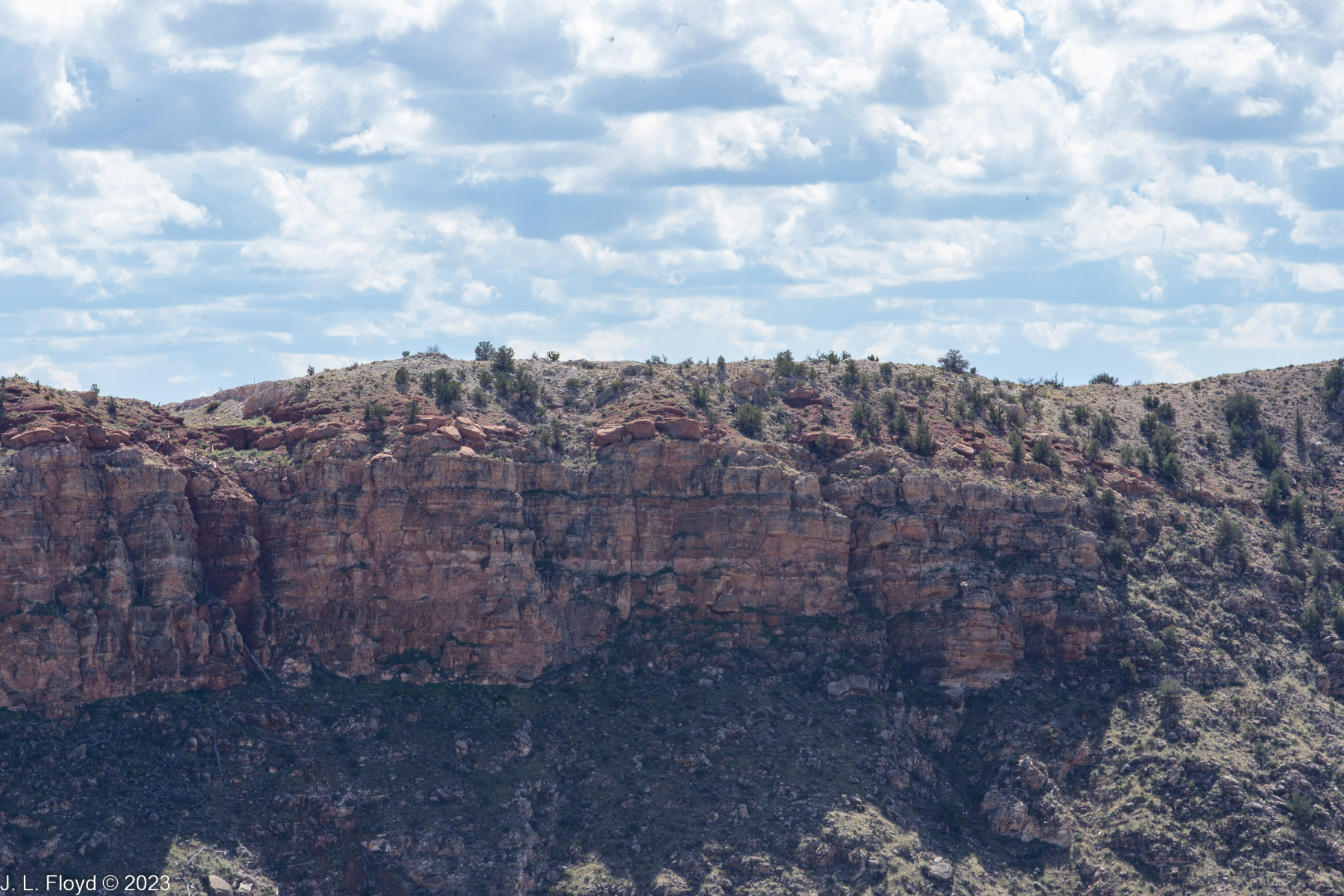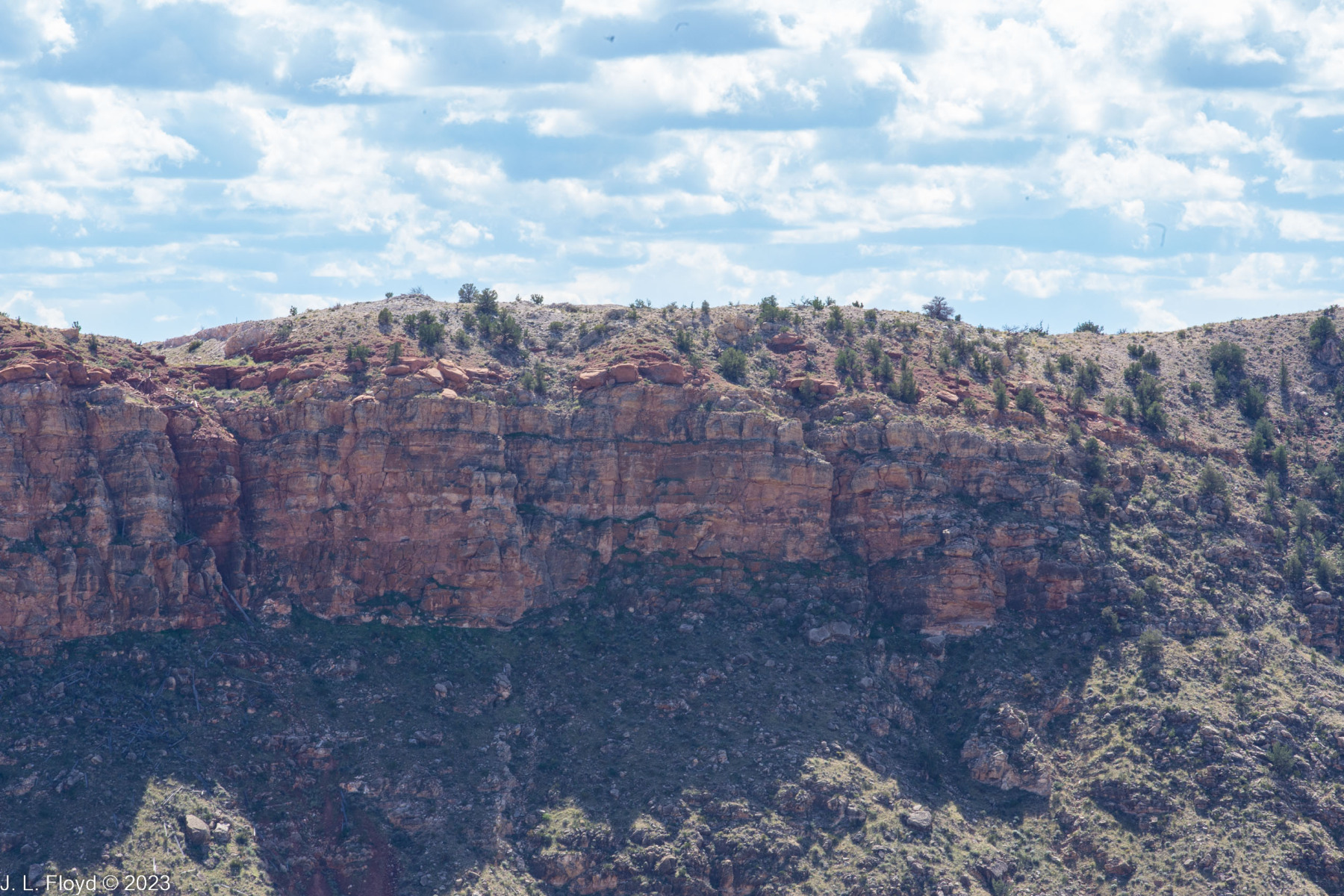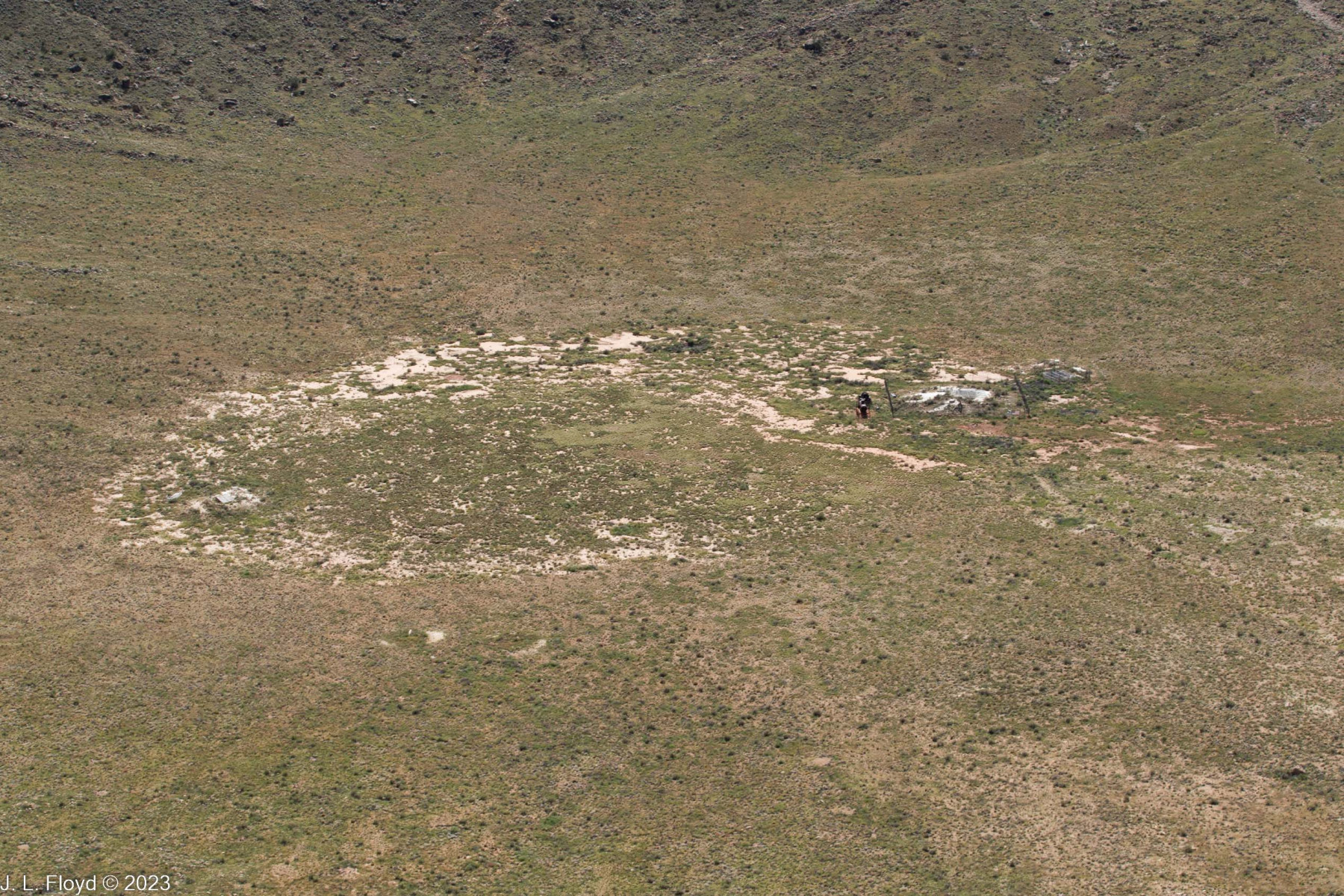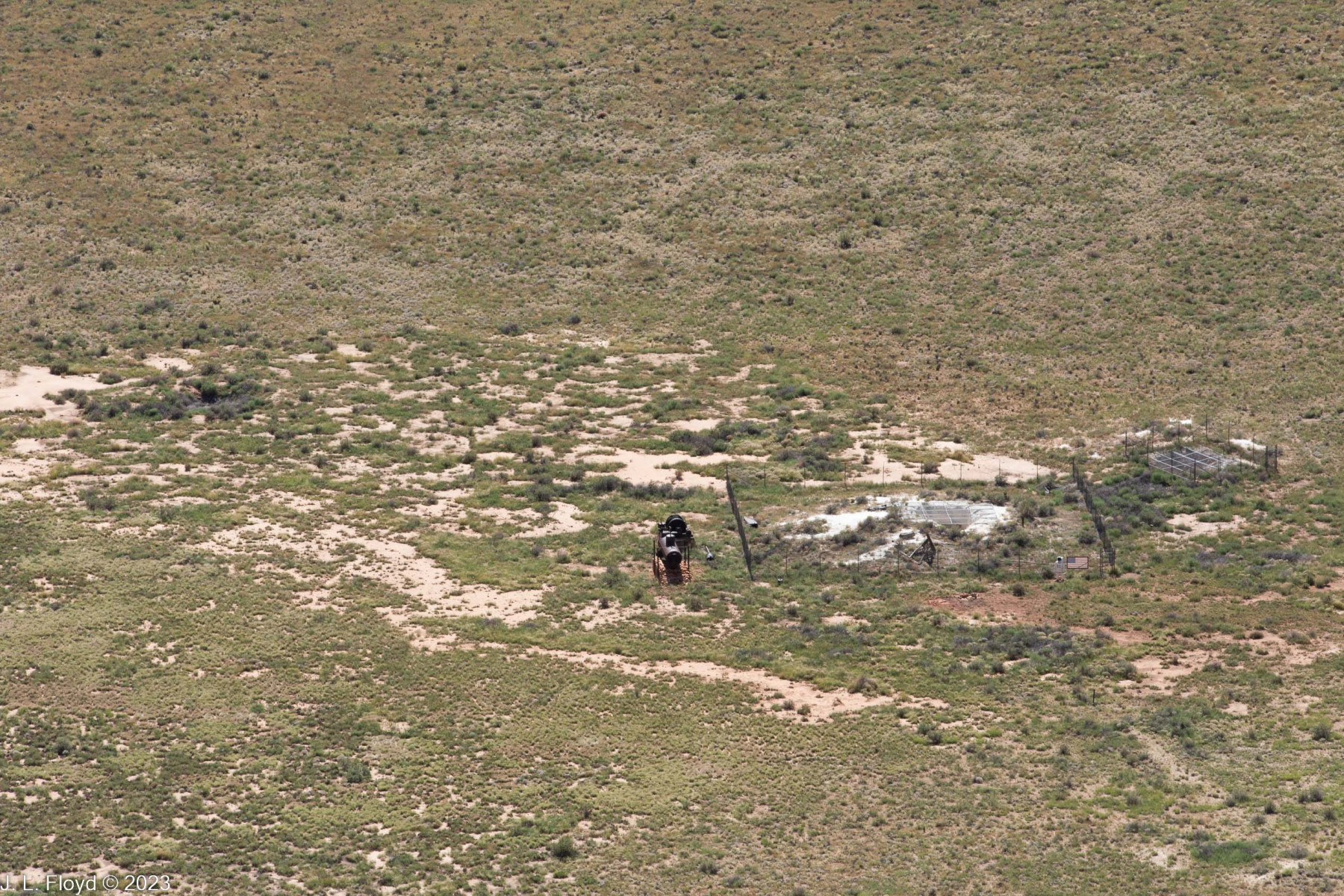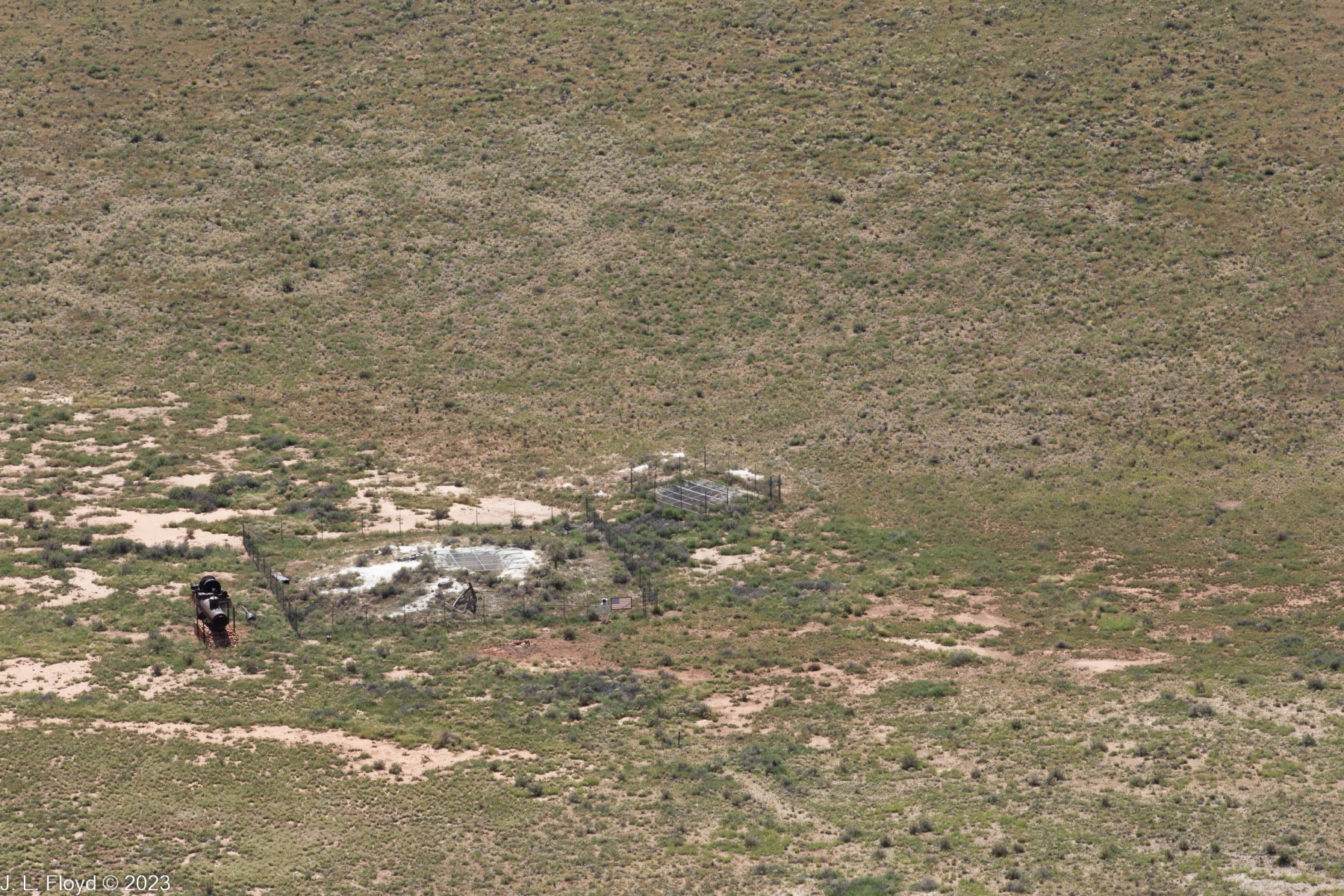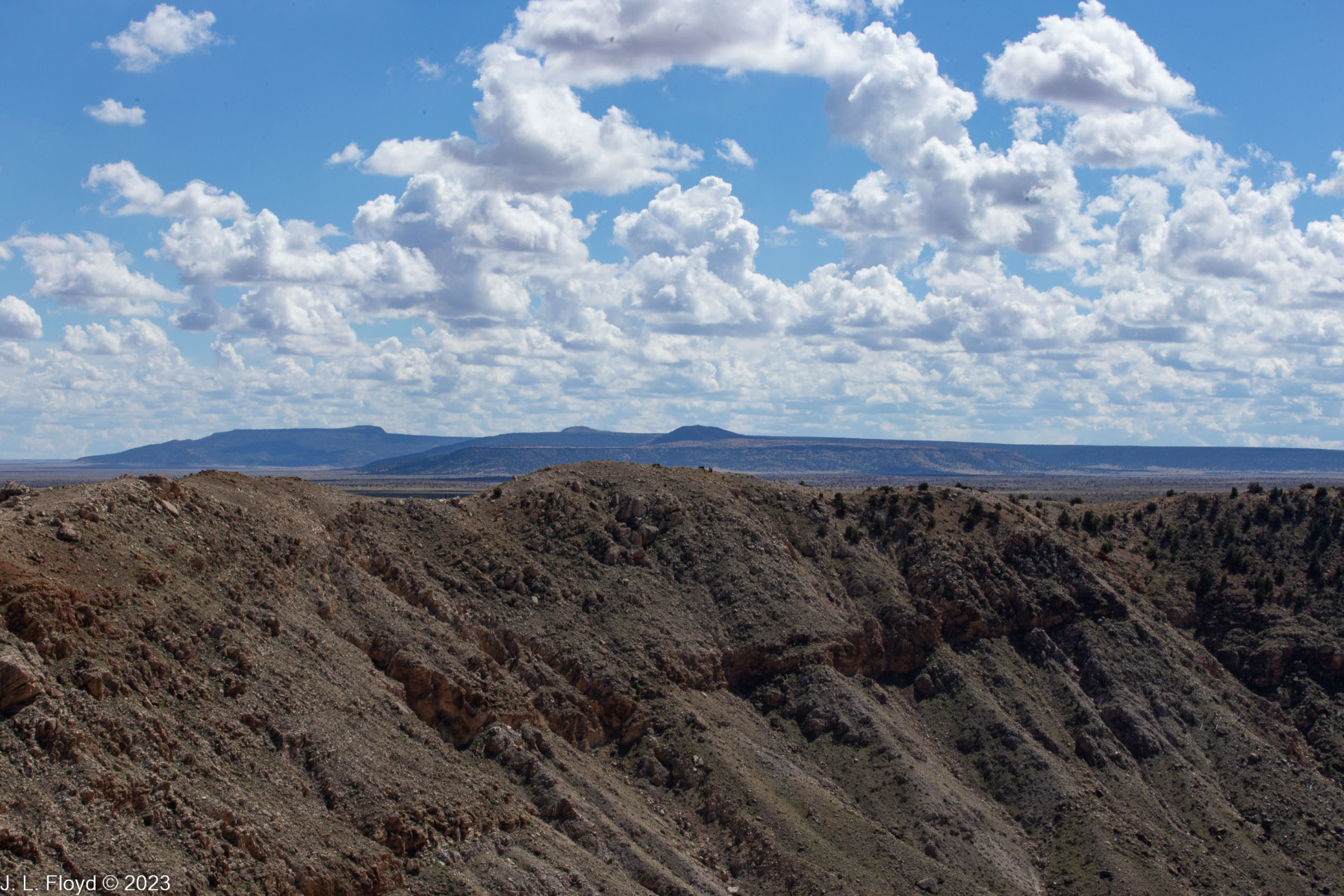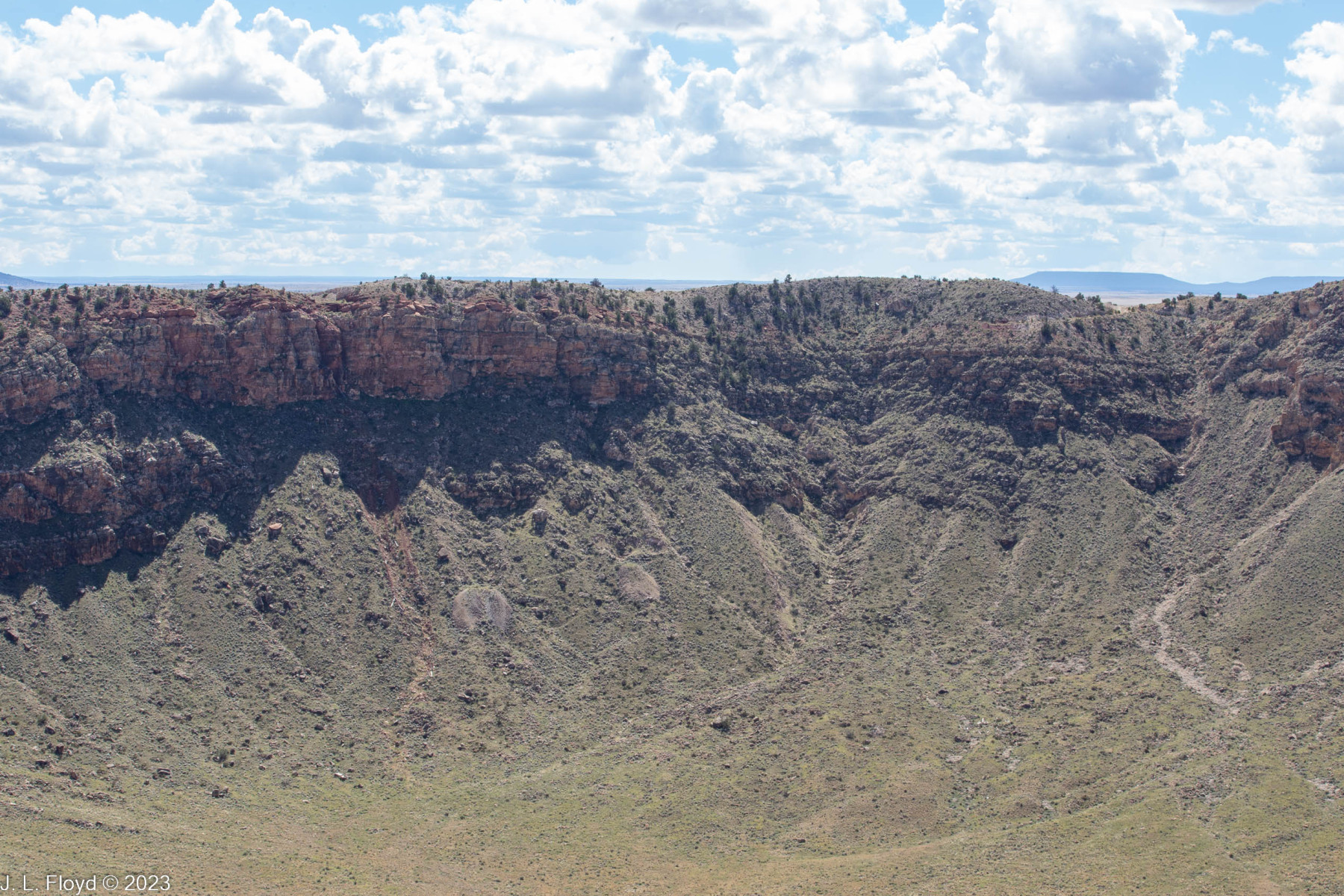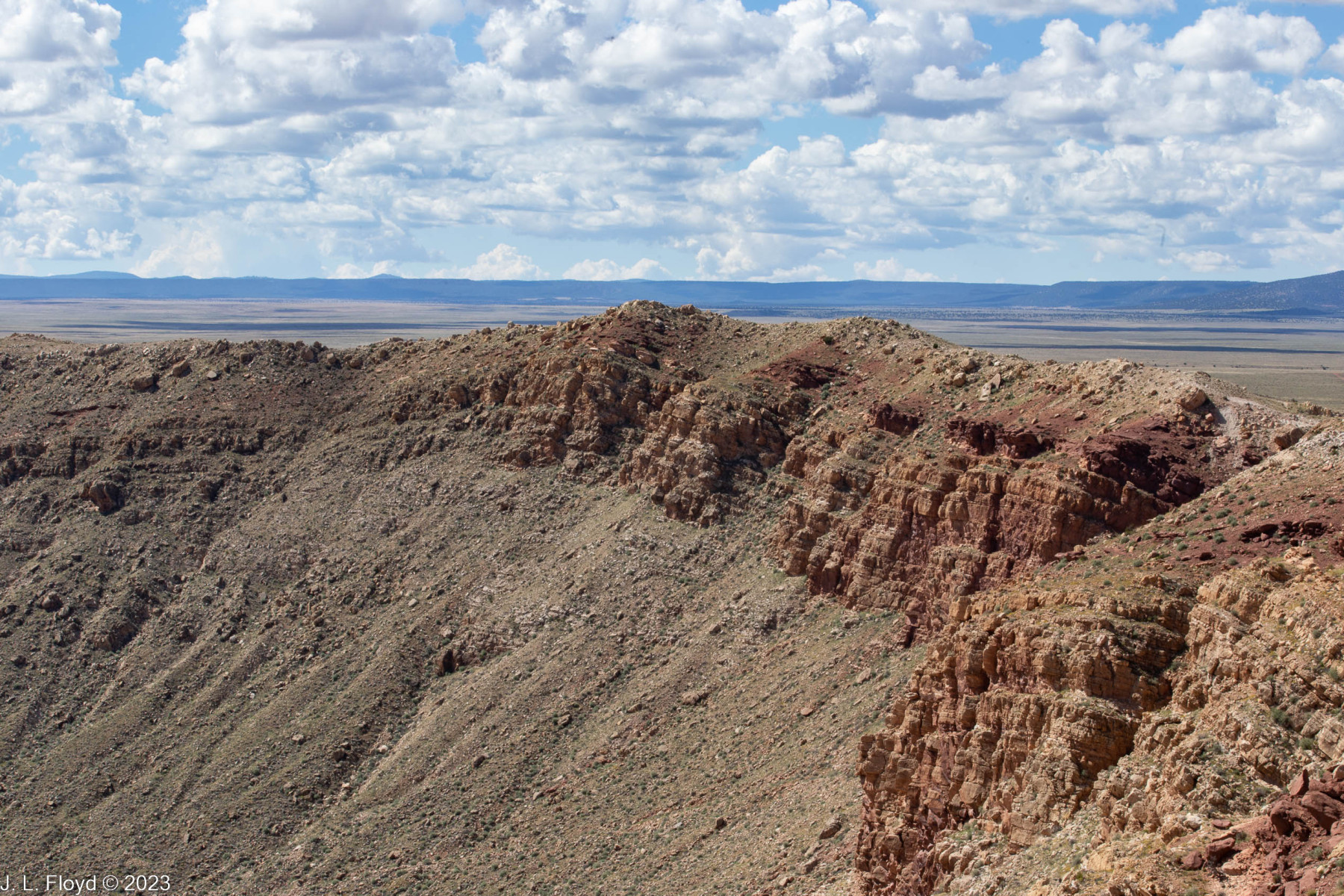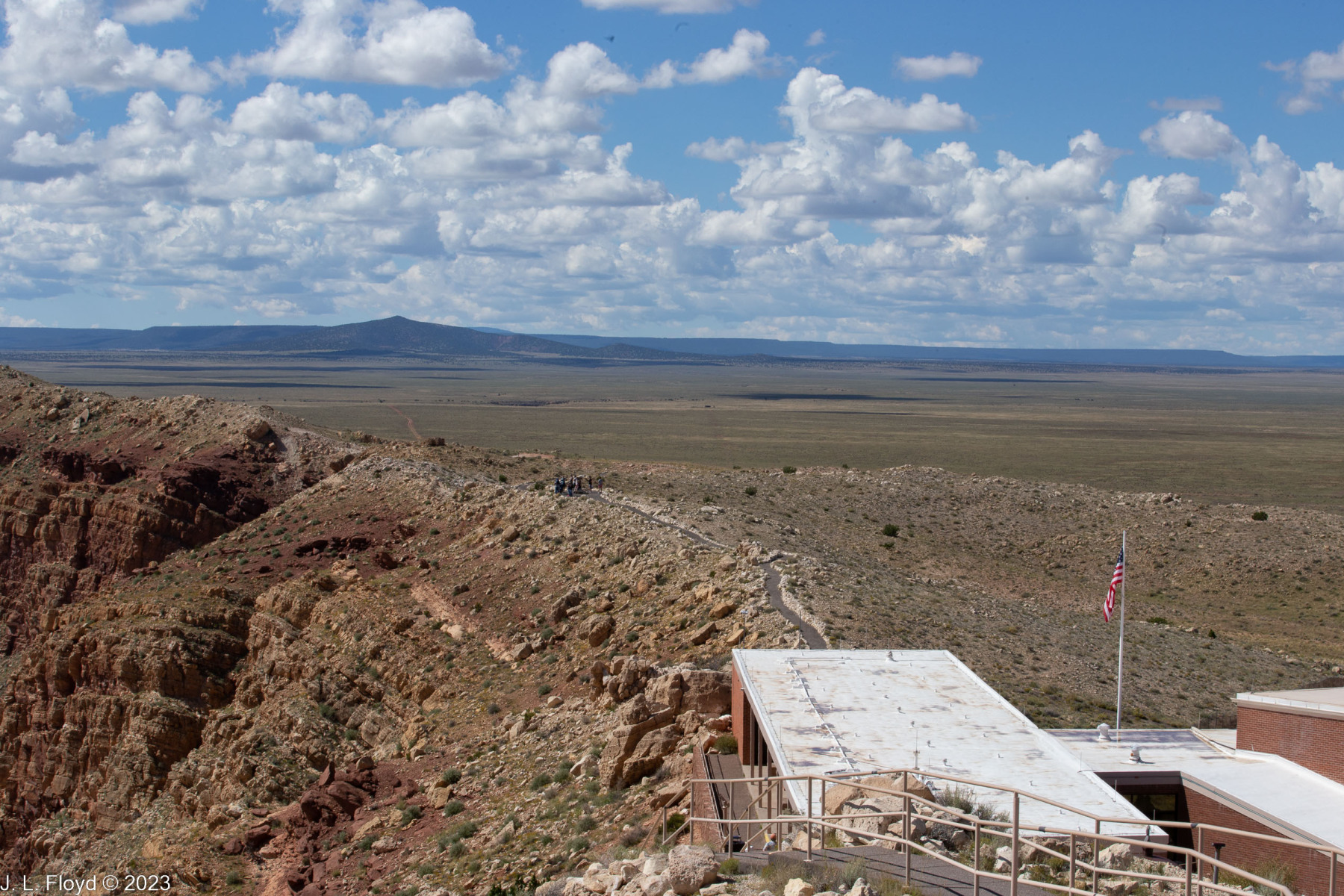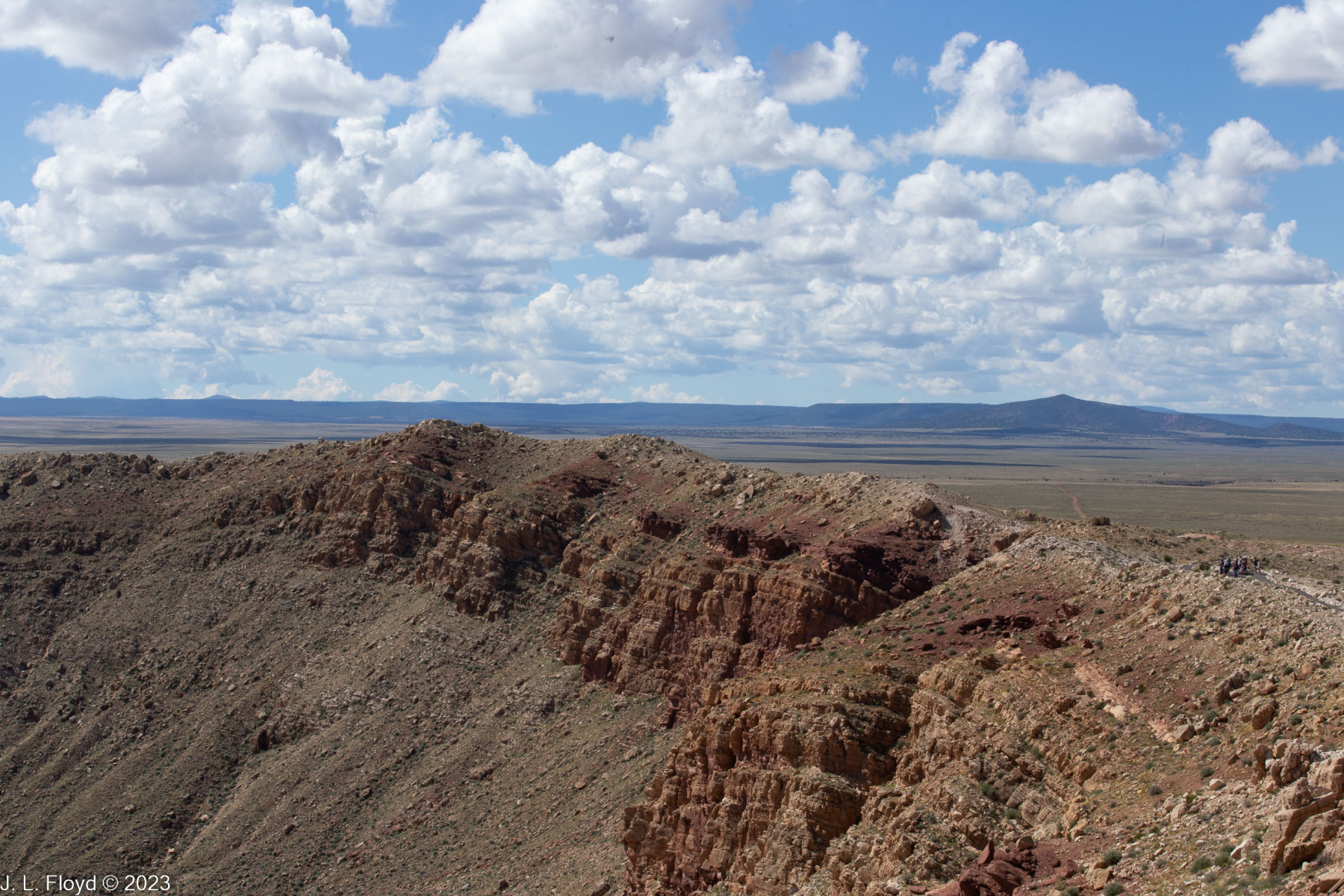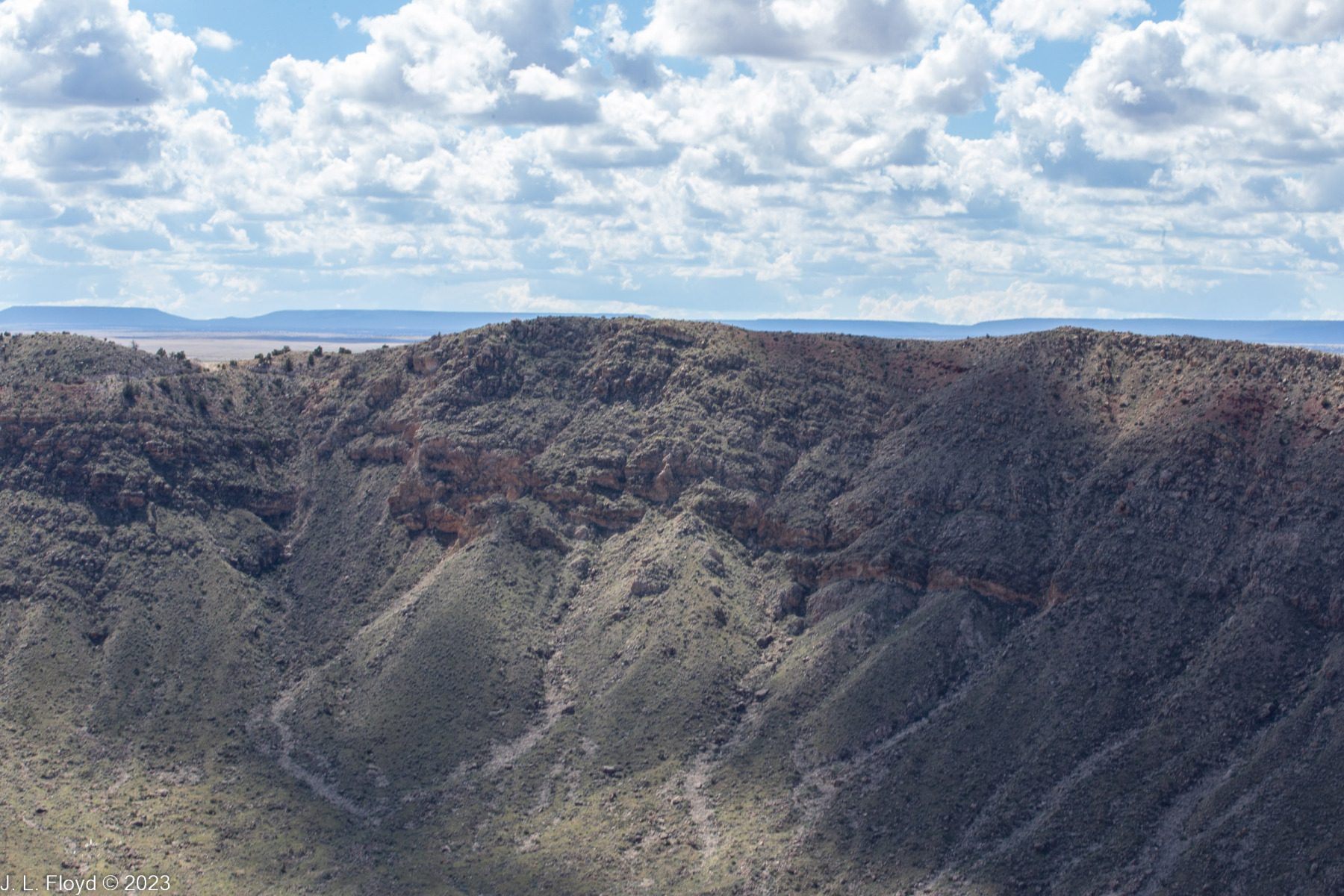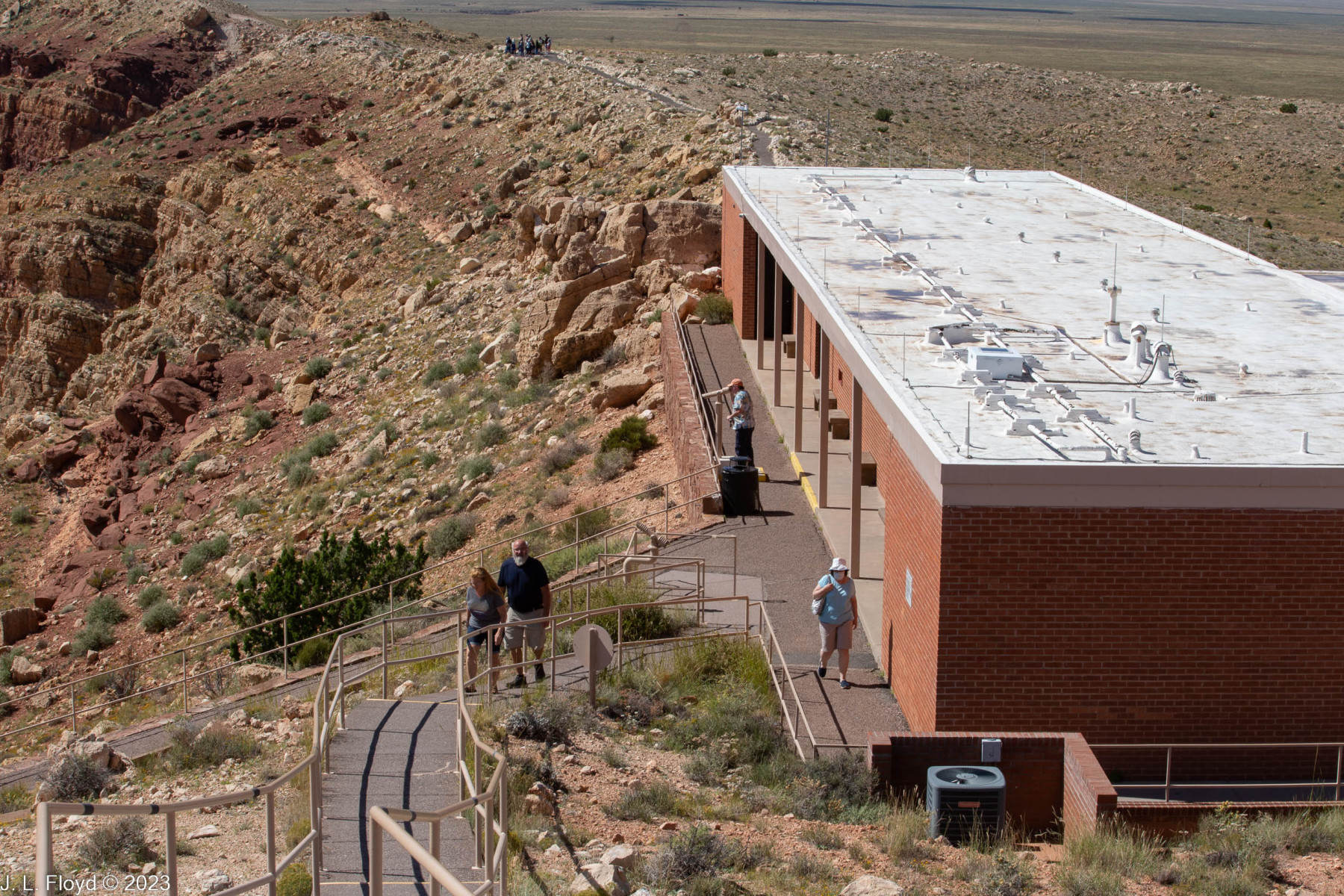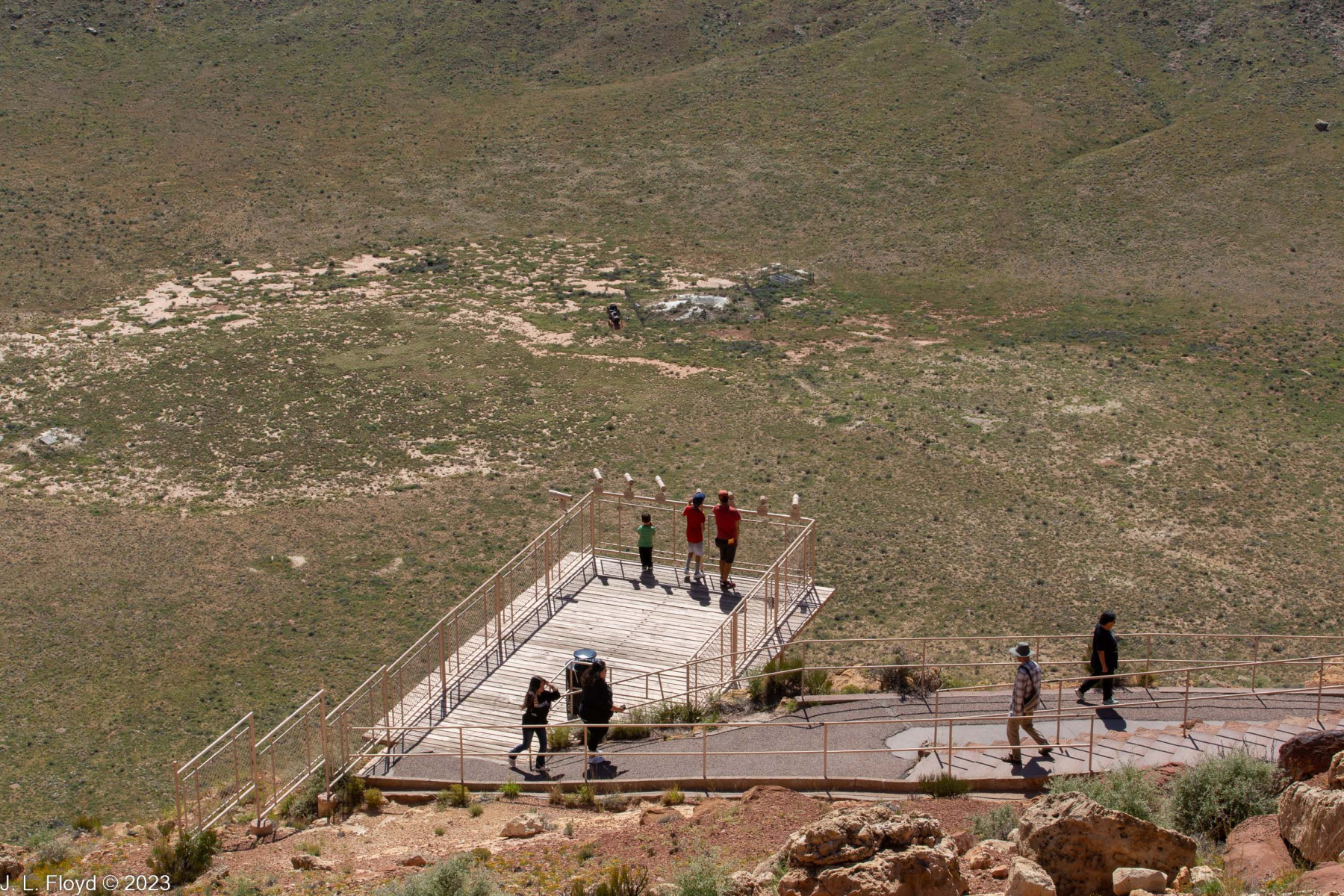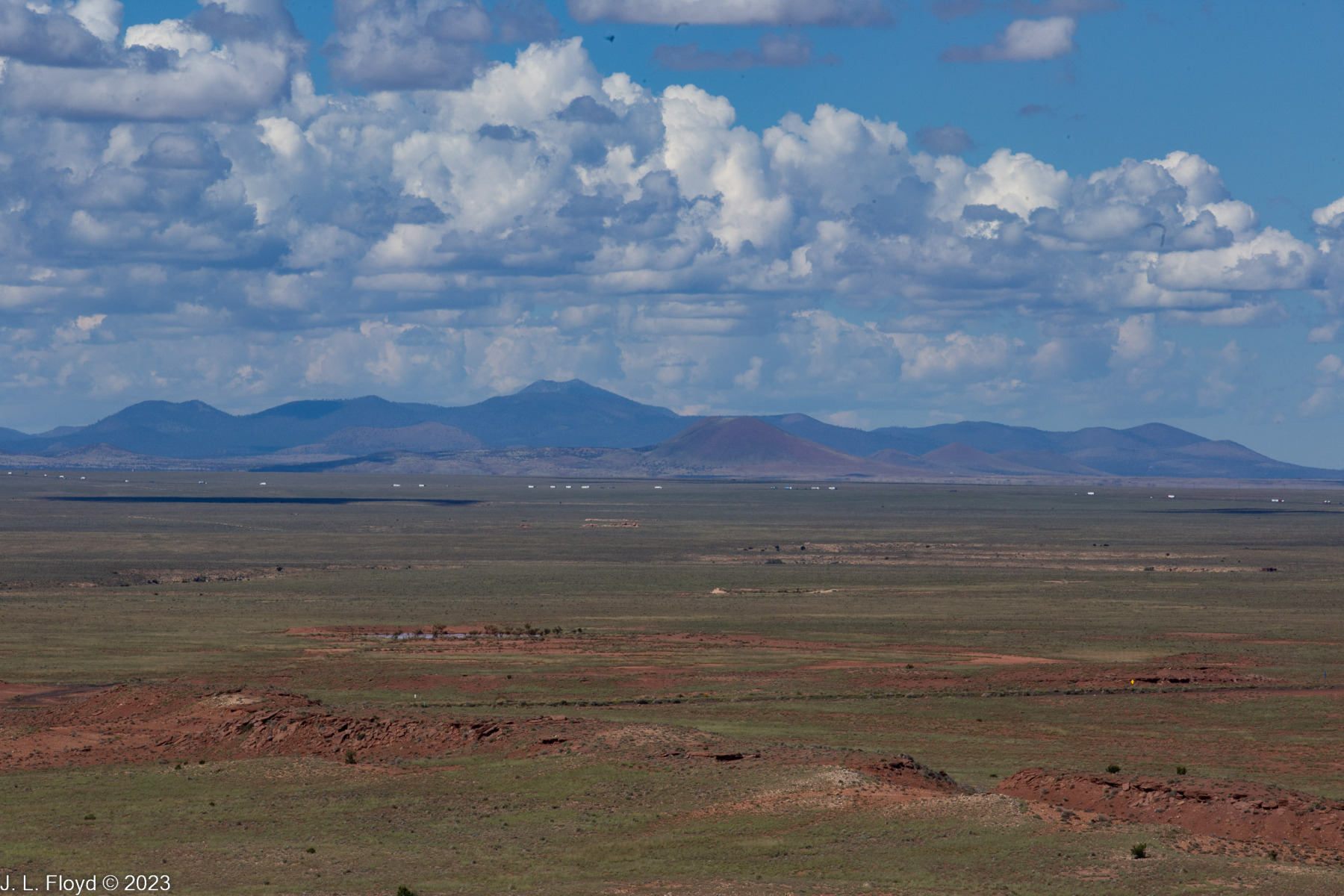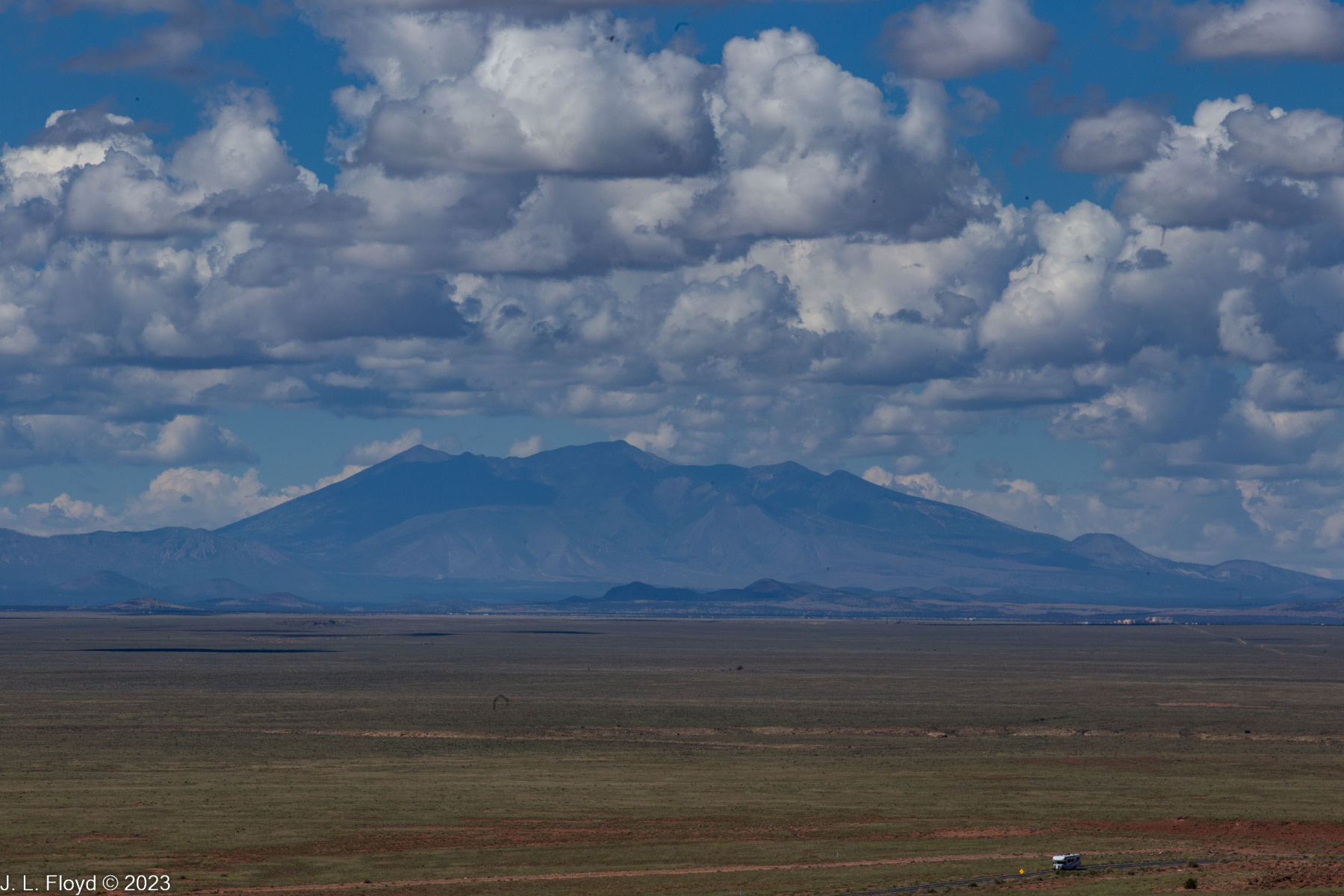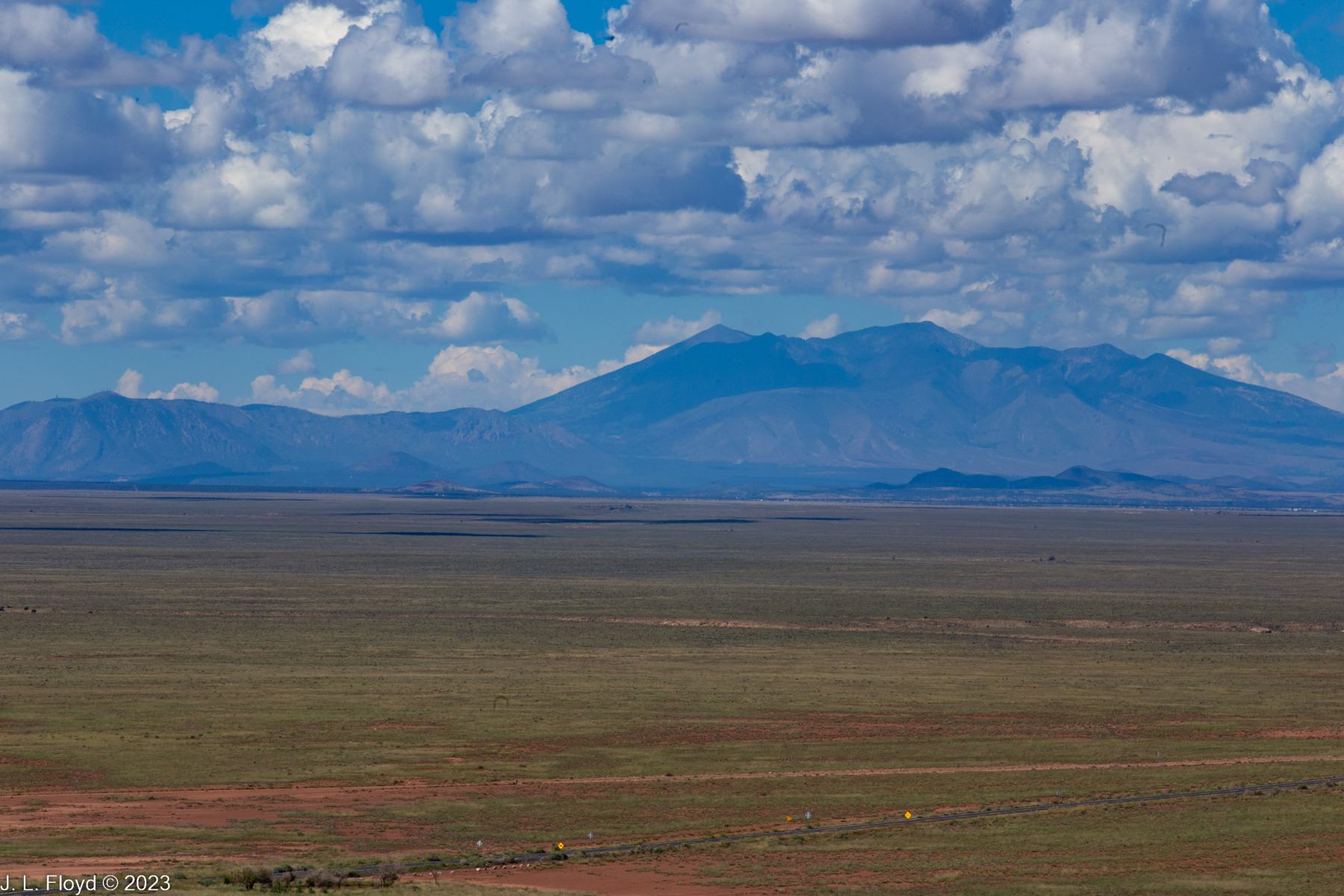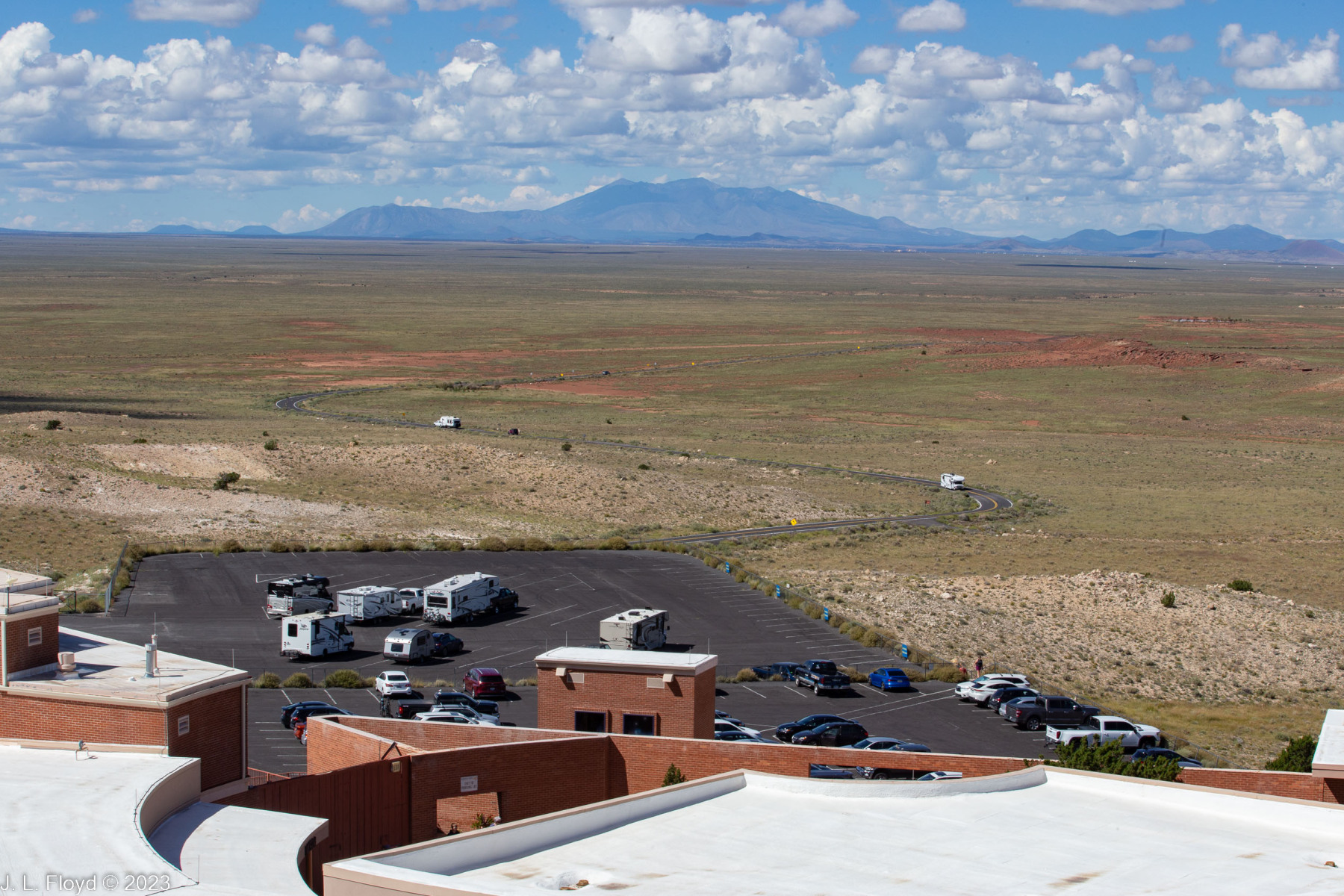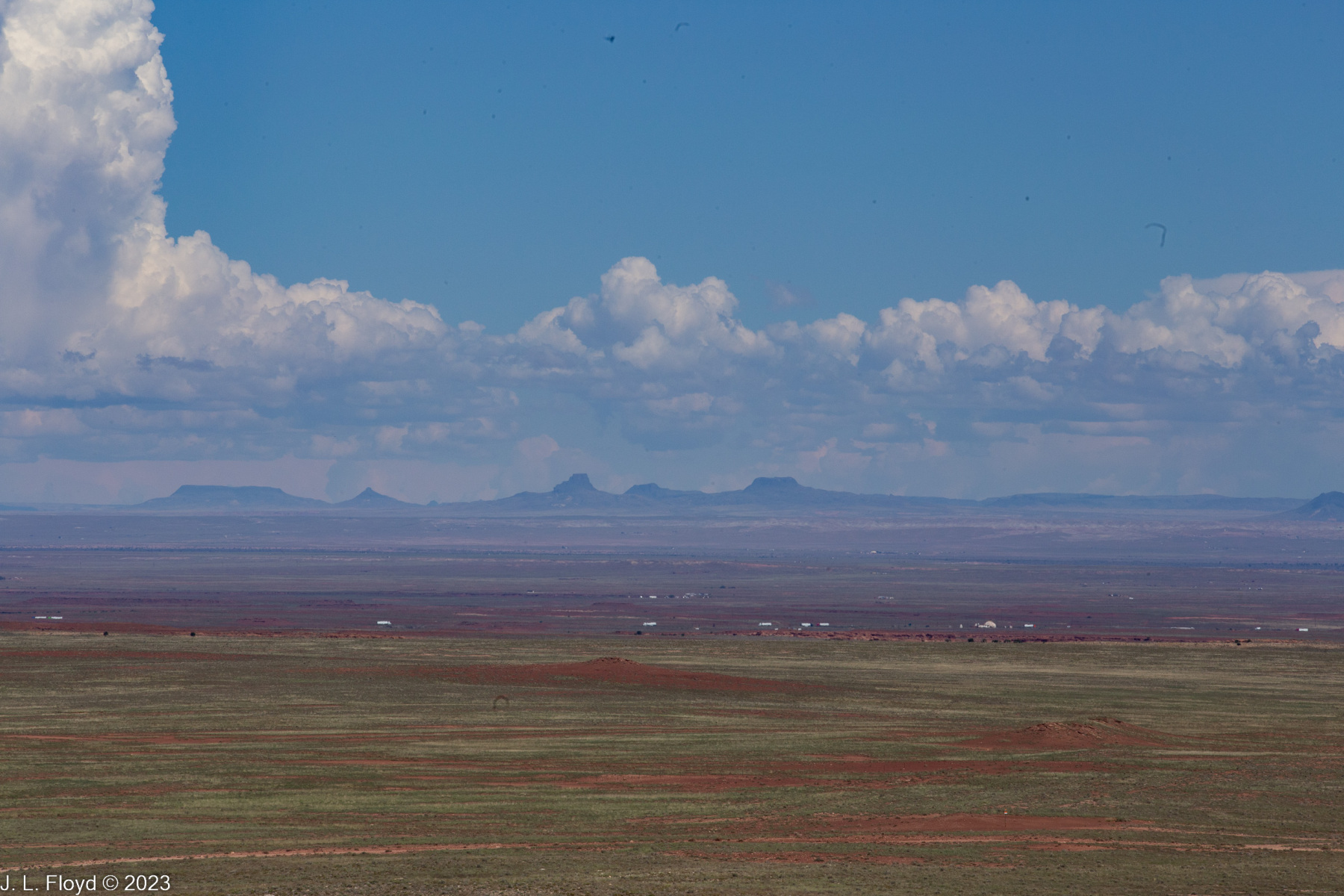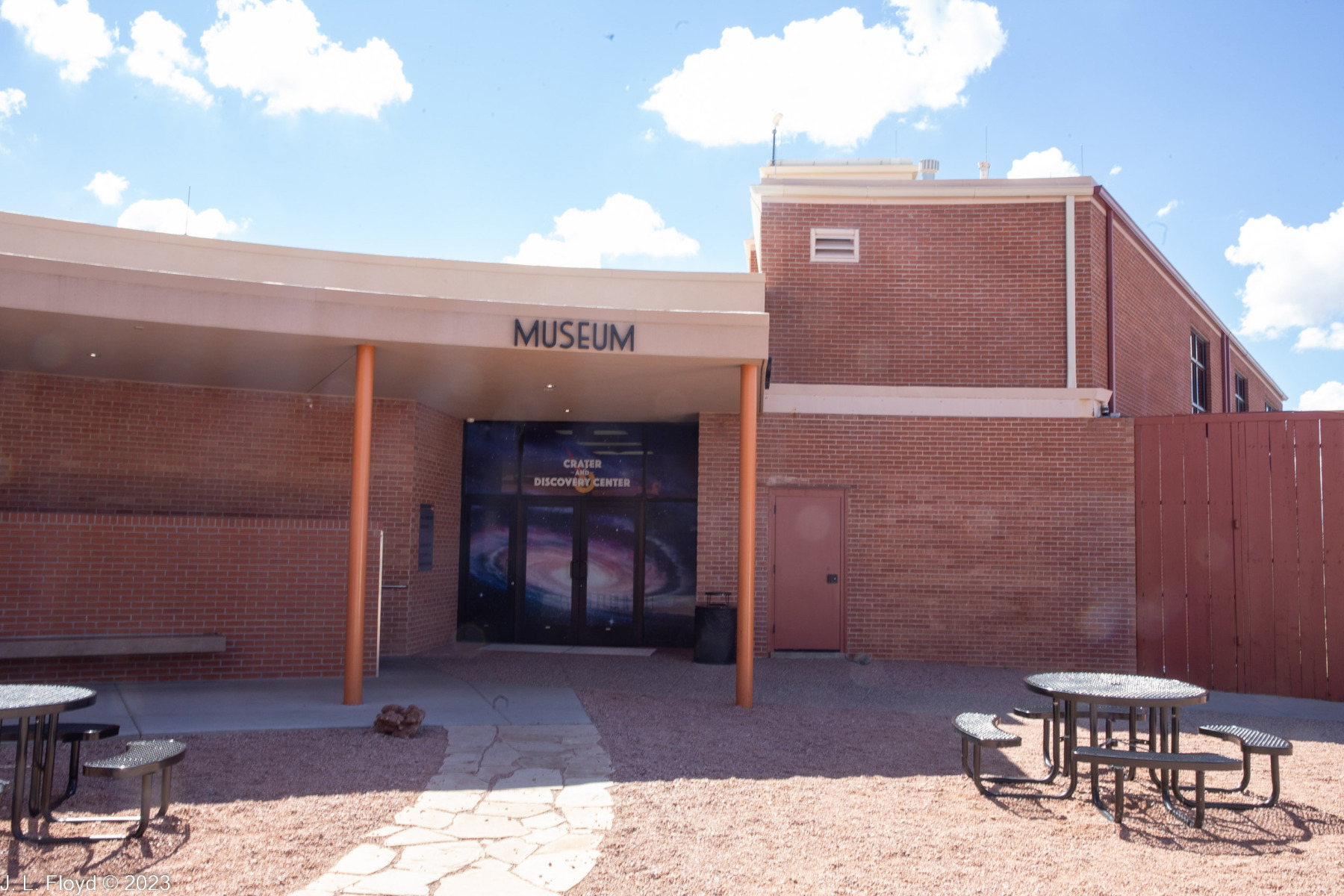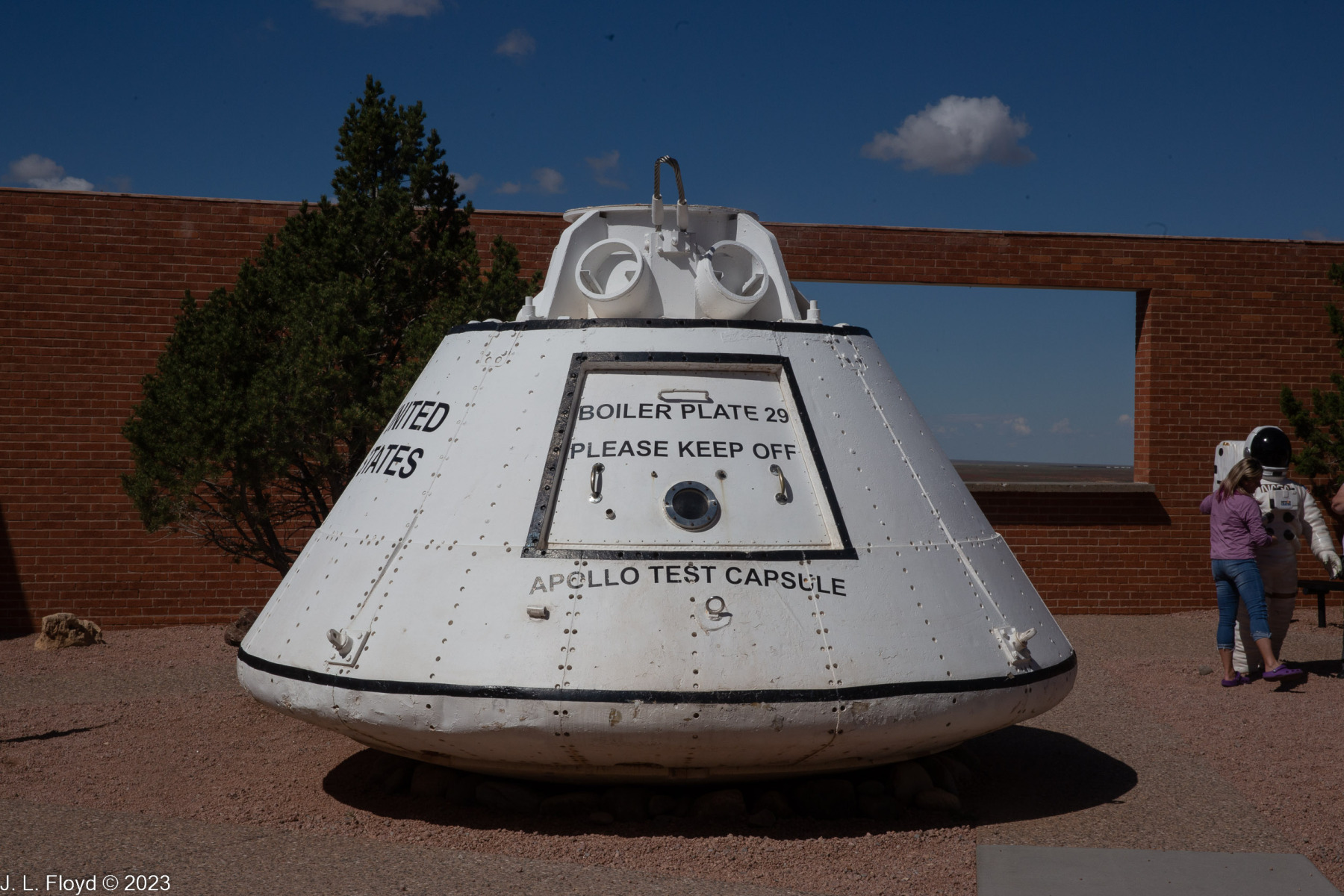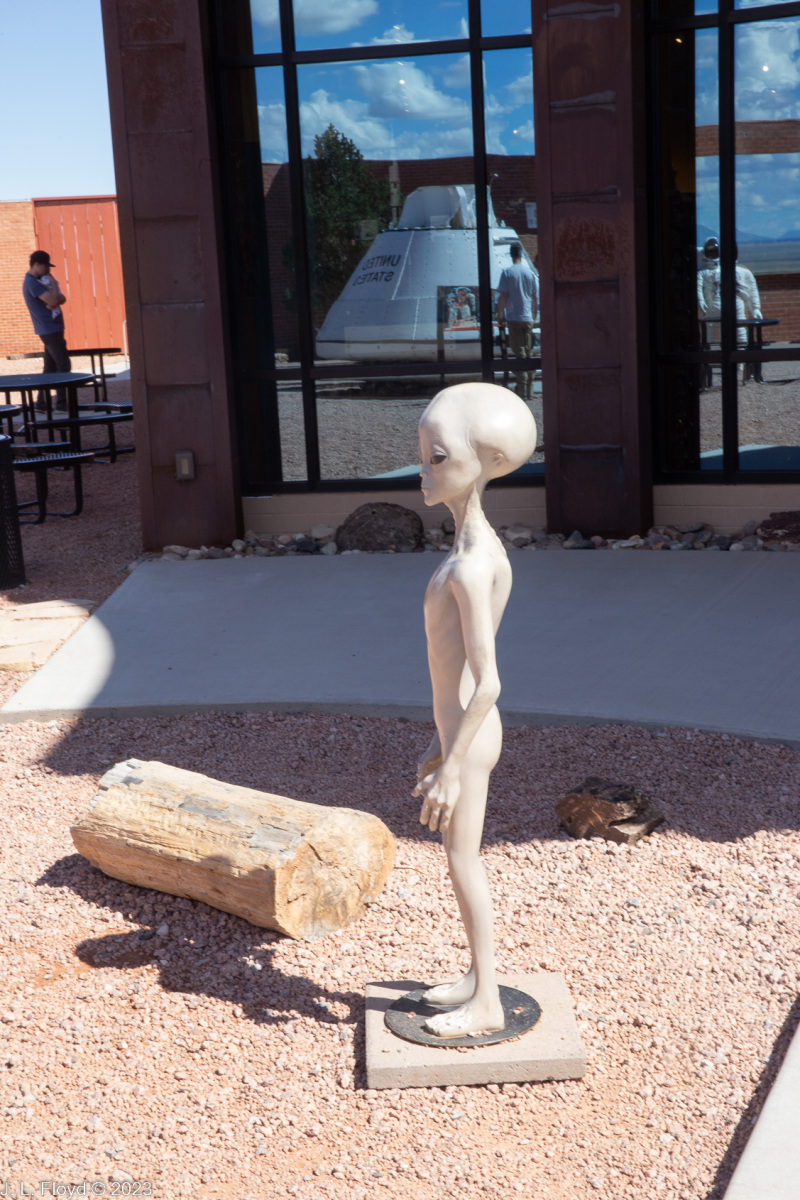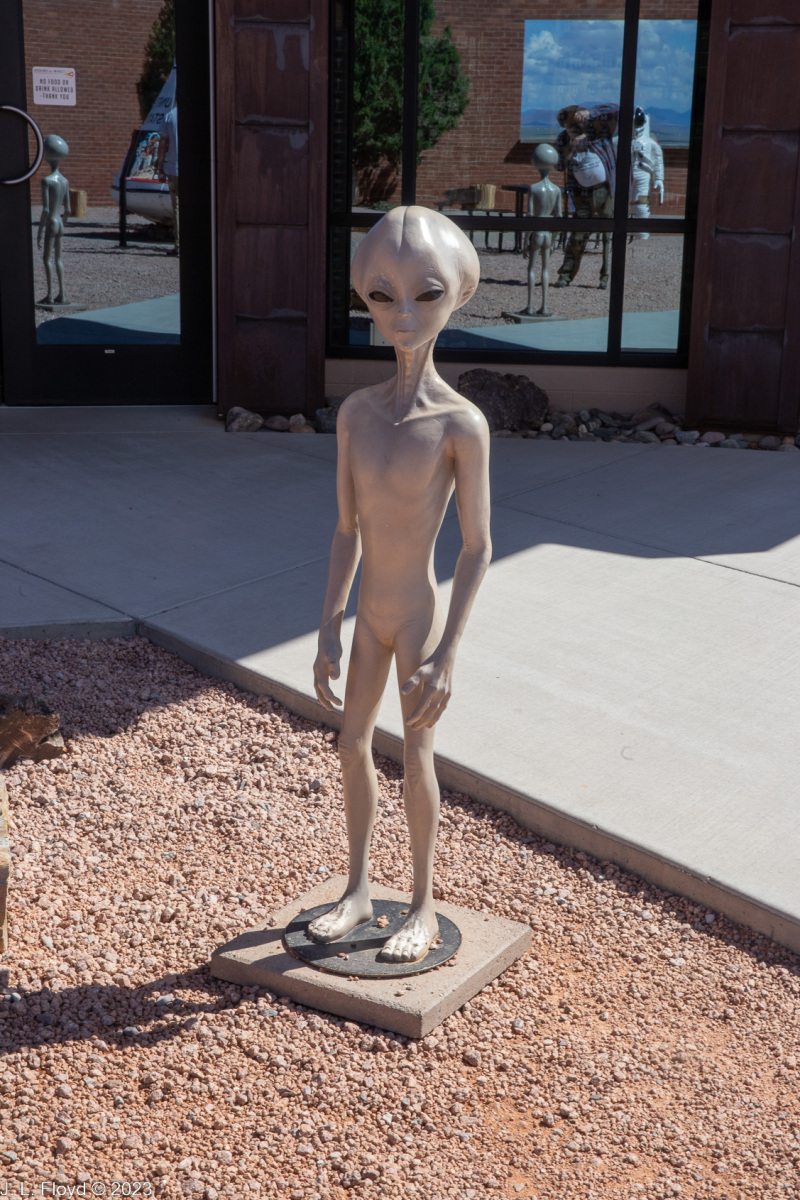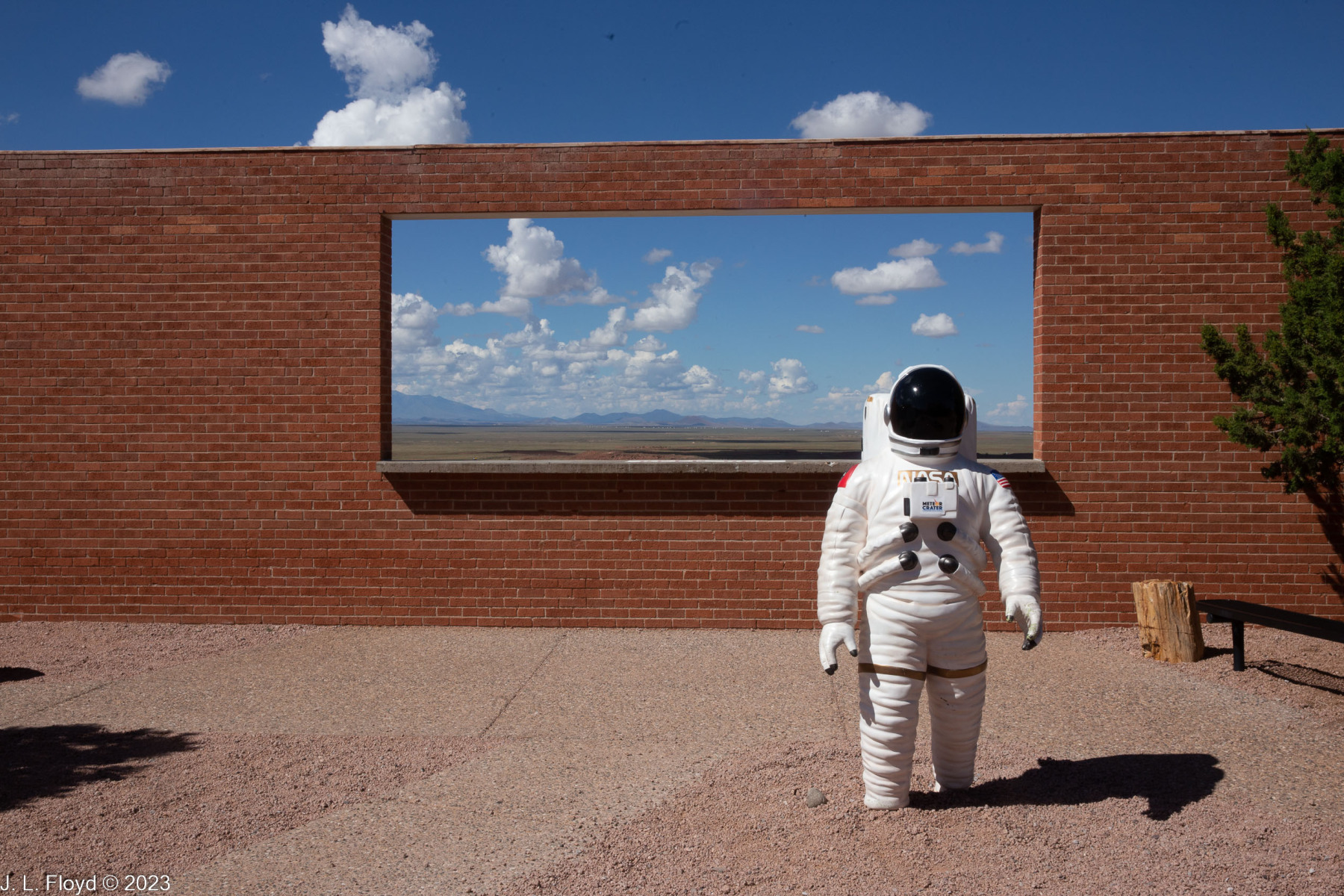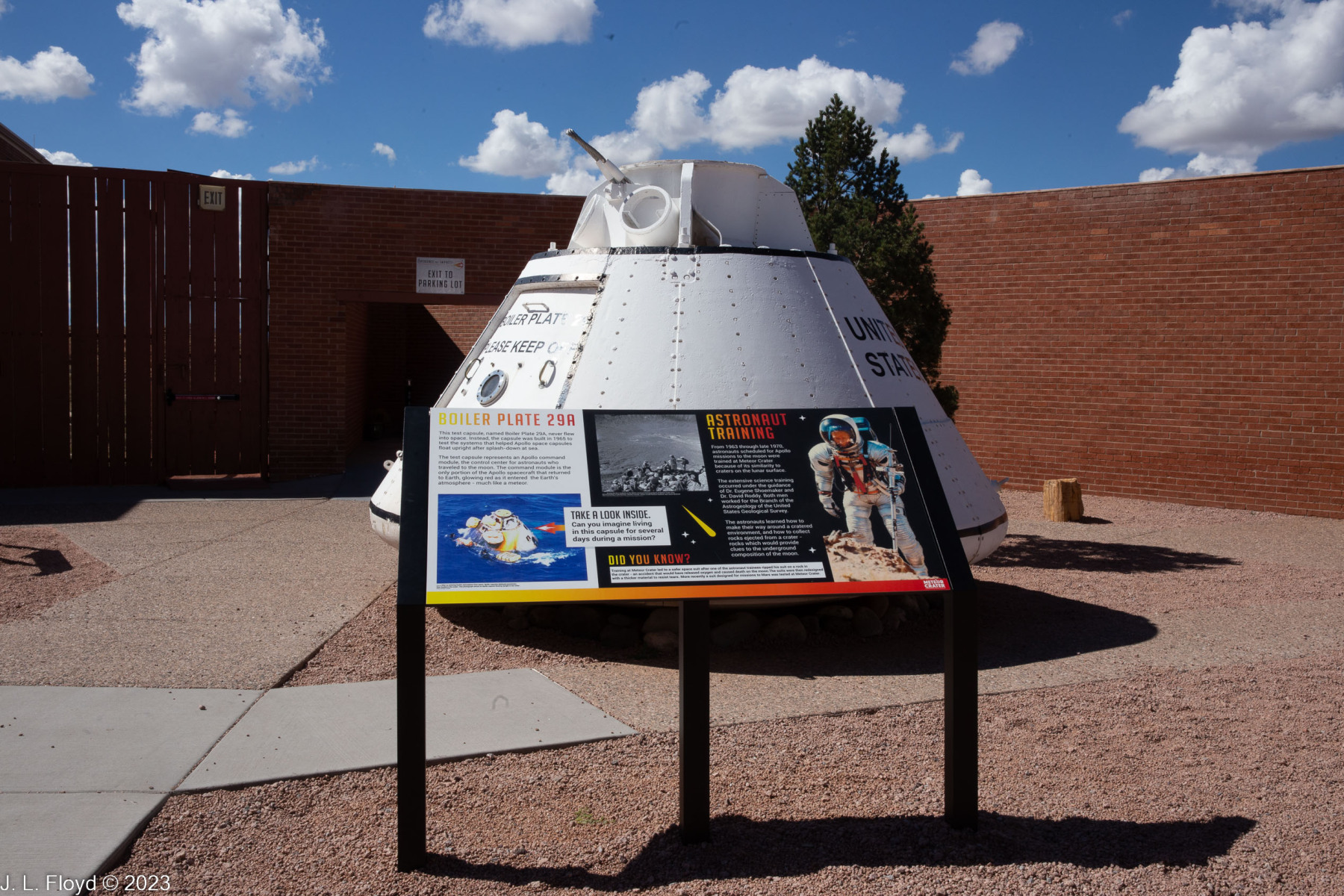On October 5, 2022, Sandie and I drove from Flagstaff, Arizona, just 37 miles down Interstate 40 and visited Meteor Crater. We had wanted to see it for many years, ever since it first became known to non-indigenous people in the 19th century. 😉 The crater is the result of the impact of a nickel-iron meteoroid, about 160 feet across, striking the surface of the earth 50,000 years ago at about 29,000 mph, or 12.8 kilometers per second. The impact left a hole which is now about 3,900 feet (1,200 meters) in diameter and 560 feet (170 meters) deep, with a rim that is 148 feet or 45 meters high. At the time of the impact the climate of Northern Arizona was wetter than it is now, and the crater was at first filled by a lake; later the lake dried up and left the bare crater floor that we see now.
In the early 20th century the property surrounding the crater was acquired by Daniel M. Barringer, an engineer and entrepreneur who believed that the meteor strike would have left a huge lode of iron ore buried in the earth underneath the crater floor and expected to make a lot of money by mining the ore. He was wrong – it turns out that the impactor disintegrated into small fragments scattered all over the plain and left no commercially significant deposits – and he went broke from the expense of searching for the nonexistent lode; but the crater still belongs to his descendants, who eventually found a way to profit from it (or at least recover his investment) by erecting a visitor center and charging admission to the public for viewing the crater.
After driving 5.7 miles south from the I-40 exit, we arrived at the visitor center, which in addition to viewing areas includes a museum, movie theater, gift center and coffee shop. Admission is $25 per person ($23 for seniors like us), not an exorbitant price by today’s standards.
We were able to view the crater from three levels: the Main Observation Deck, which is approximately at the level of the top of the rim; the Lower Ramada, which is reached by a stairway from the observation deck and takes you down a little way into the crater, giving you a closer look at the crater floor; and “Moon Mountain,” a high-level platform which provides breath-taking (literally, since it is reached by a long stairway climb) views of the surrounding countryside as well as the crater itself. The viewing areas are equipped with small telescopes for closer observation. I mostly used my 70-200mm zoom telephoto lens with my Canon EOS-6D full-frame DSLR for photos from these platforms.
The Meteor Crater website claims four outdoor observation areas, whereas I remember three; this is because the Main Observation Deck has an associated platform at a slightly lower level, which can be considered a separate lookout point. Here I am not distinguishing between photos taken from these two points – I have lumped them all together as shots from the Main Observation Deck.
One reaches the Lower Ramada by continuing on down a stairway from the Main Observation Deck. That takes you a fair way down into the crater, so you obtain a different perspective on the sides as well as closer views of the bottom.
Since the impact that created it, a lot of sediment has accumulated at the bottom of Meteor Crater as a result of erosion from the rim and deposition by wind; as a result the crater is believed to have lost about 100 feet of its original depth, while the rim is estimated to have lost 50-65 feet of its original height. But 50,000 years is a relatively young age for an impact crater; most of them, such as the Chicxolub crater created by the asteroid or comet that (supposedly) did in the dinosaurs 65 million years ago, are so far eroded away to have become almost unrecognizable.
At the bottom of the crater, there is an old mine shaft with a fence around it. The Barringer Crater Company has attached an astronaut cutout and flag to the fence, presumably to remind us that NASA used the crater to train Apollo astronauts for missions to the moon in the 1960s and 70s.
Moon Mountain affords a bird’s eye view of the Discovery Center as well as of the other observation areas and the top of the rim.
Moon Mountain also provides a broad vista of the vast expanses of flat plain surrounding the crater as well as the distant mountains beyond.
Descending back down to the Discovery Center, we checked out the exhibits in the courtyard of the center, as well as the Gift Shop next to it. The courtyard hosts an Apollo 11 space capsule, an astronaut’s space suit, picnic tables and benches, and a statue of an imaginary alien. The capsule is not an actual Apollo spacecraft, but a mockup of the Apollo command module, called a “boilerplate“; NASA created a number of these, to use for testing and training purposes. This one is labeled “BP-29”.
I can’t resist airing my distaste for the alien statue. It looks vaguely humanoid, which is my first and foremost objection. Given the fact – as you can verify by consulting any respectable paleontologist (and I know a number of them) – that evolution on Earth has been a matter of contingency and happenstance, it’s really unlikely that any actual alien is going to look anything like a human. The purported alien comes with a puny physique and an oversized brain, which is a stereotypical feature of a crude Hollywood science-fiction flick of the last century. (The Spielberg vapidity Close Encounters of the Third Kind comes to mind.) The apparently naked alien is also devoid of any discernible sexual traits, so one wonders how such a creature is supposed to reproduce itself. I found it quite annoying that an institution – notwithstanding its private ownership – claiming to be concerned with science education and accuracy could put such an object on display; I suspect that it was a donation from some Hollywood studio which had no further use for it and would have otherwise thrown it in the trash, where it belongs.
Notwithstanding my objections to the androgynous alien statue, I was elated to have finally seen Meteor Crater in person after so many years of bypassing it every time I drove by on Interstate 40. It was a delightful diversion from what would have otherwise been an uneventful and boring drive in the desert.
